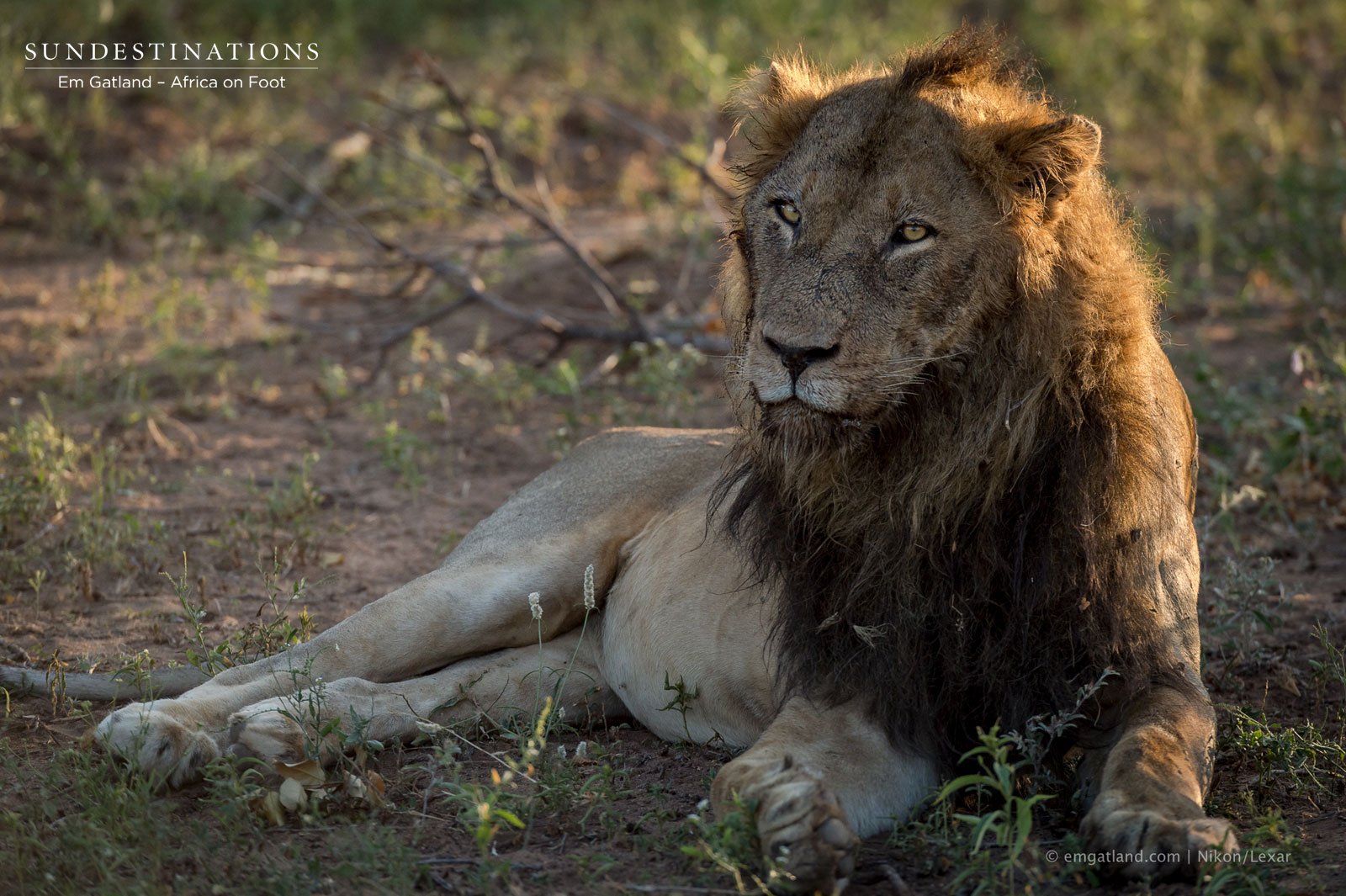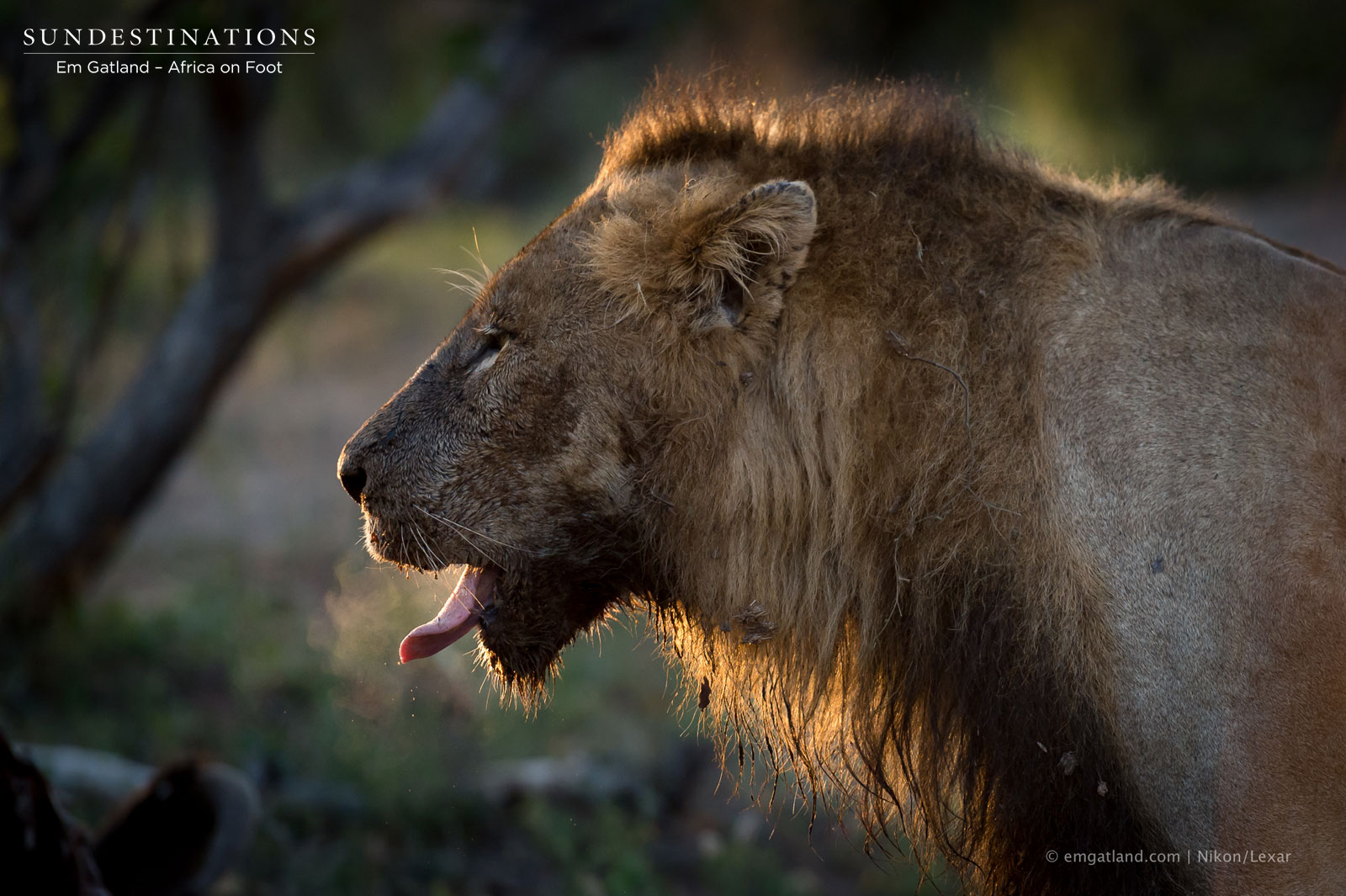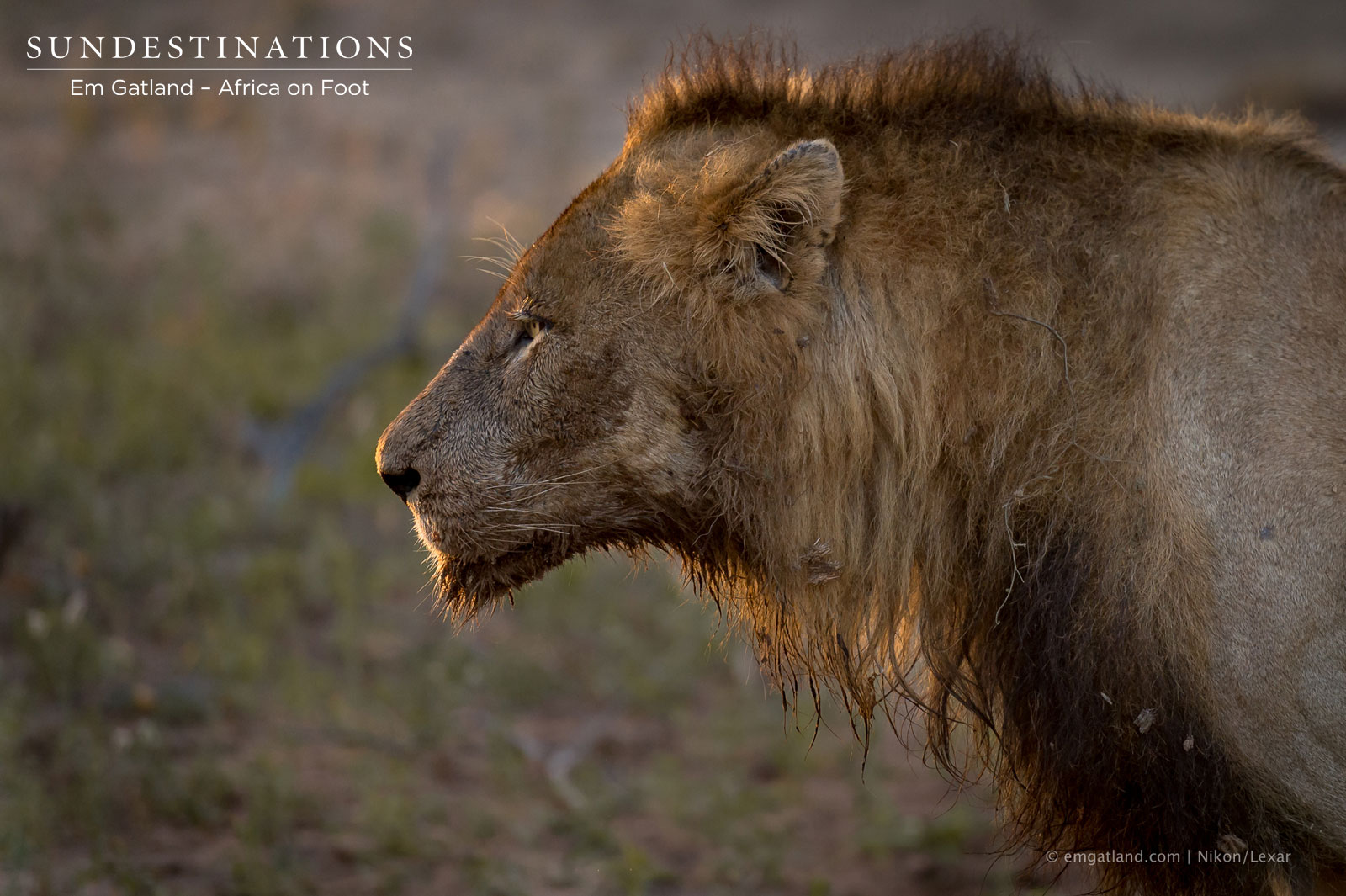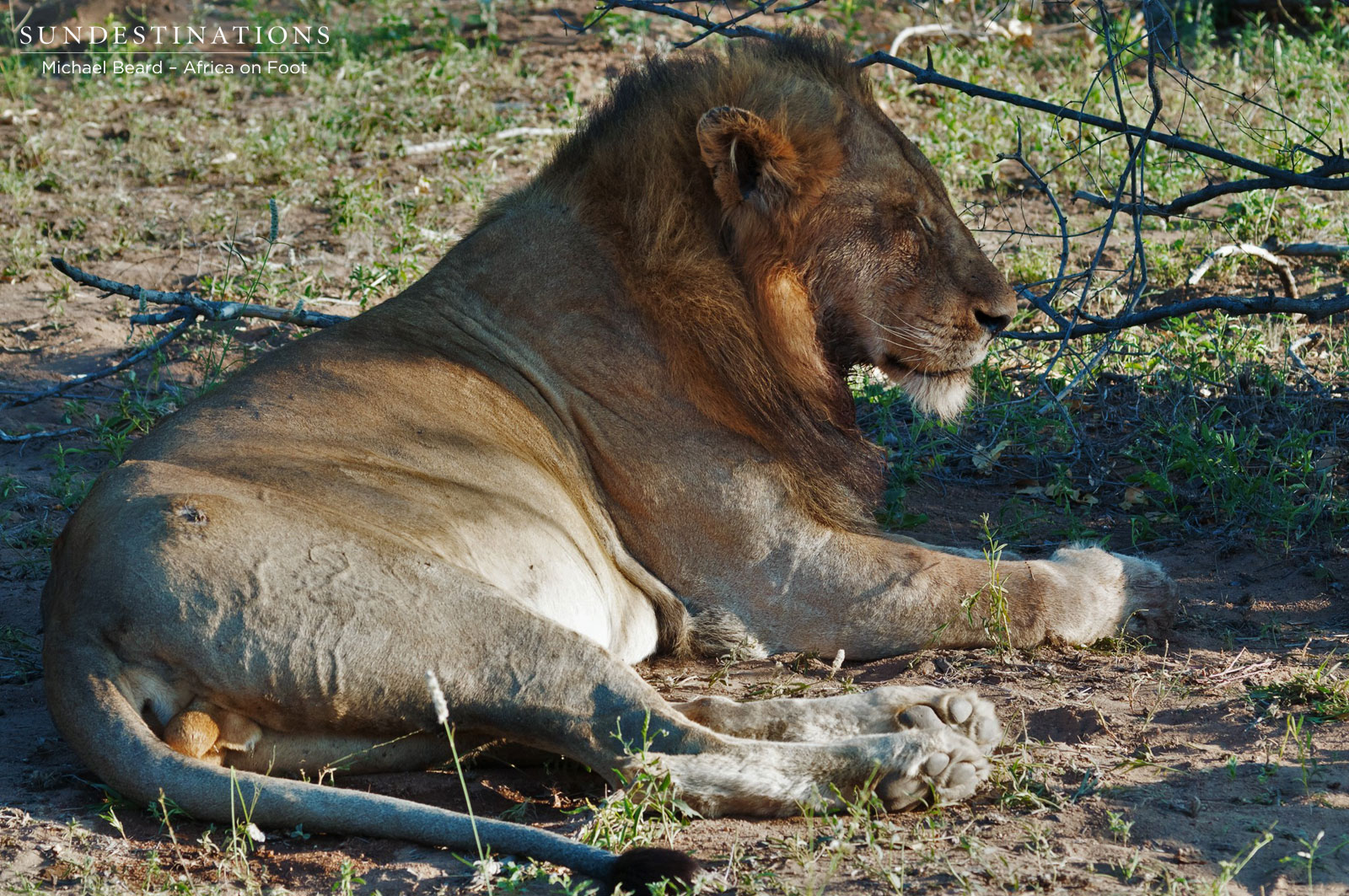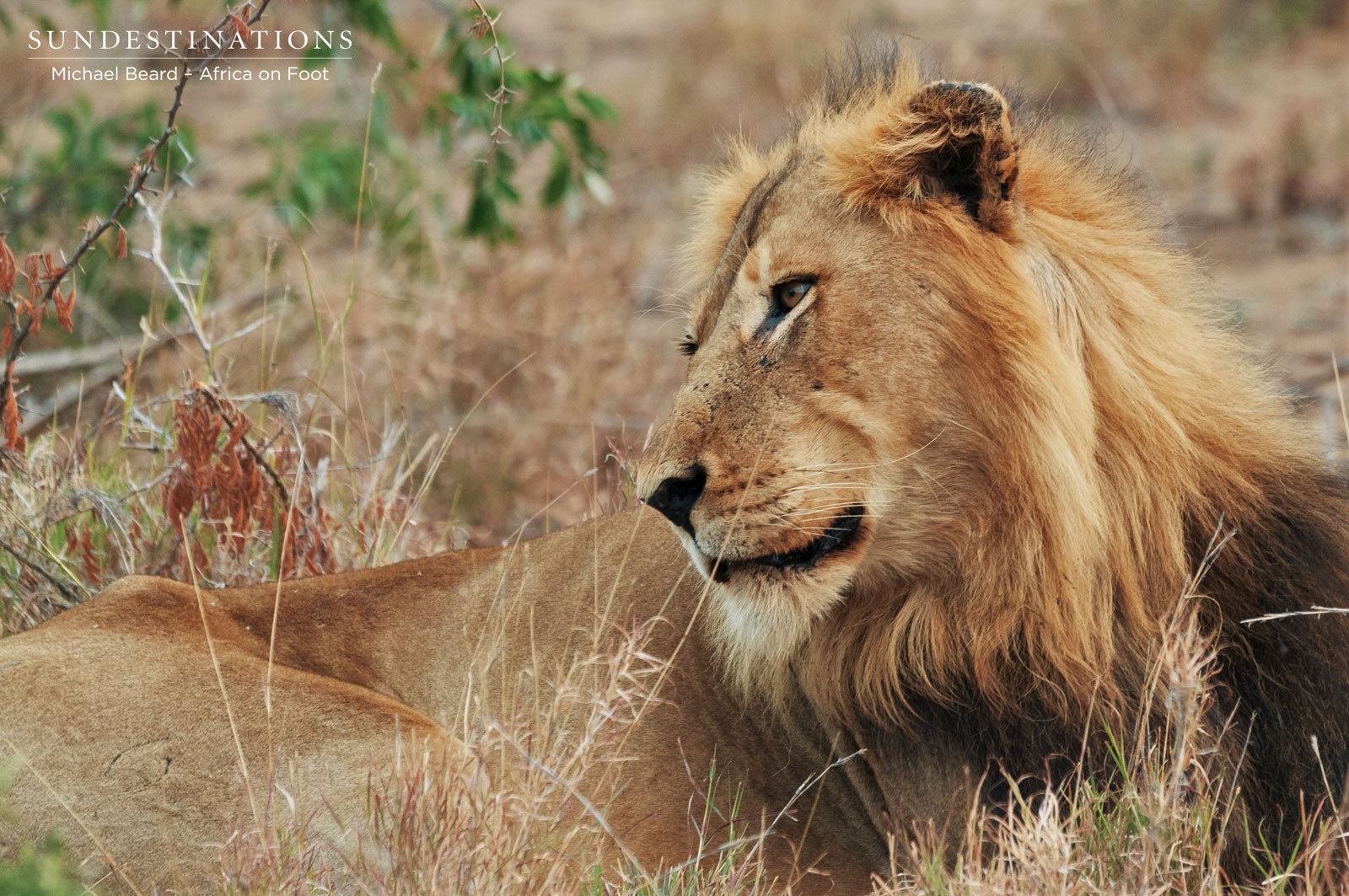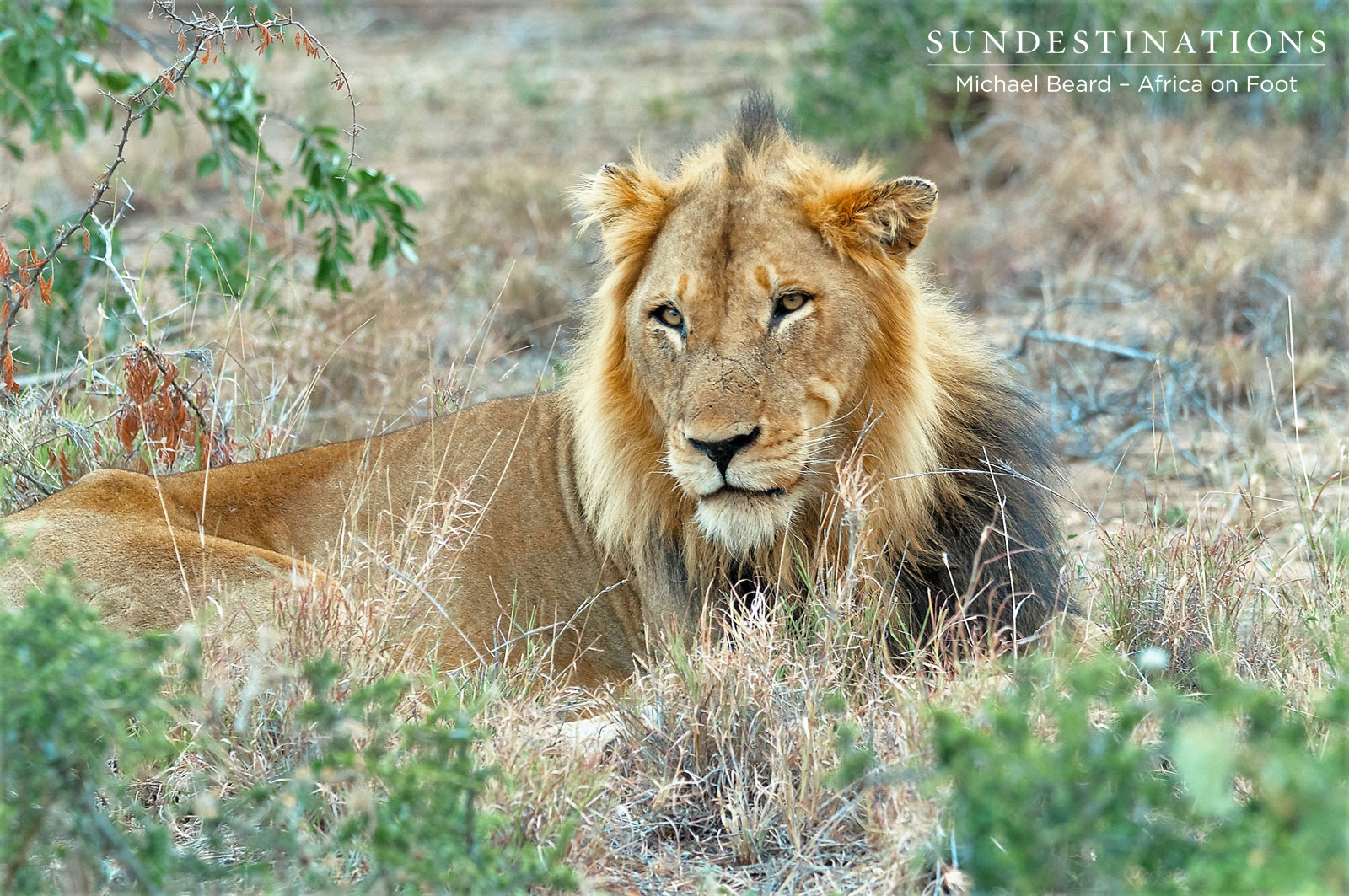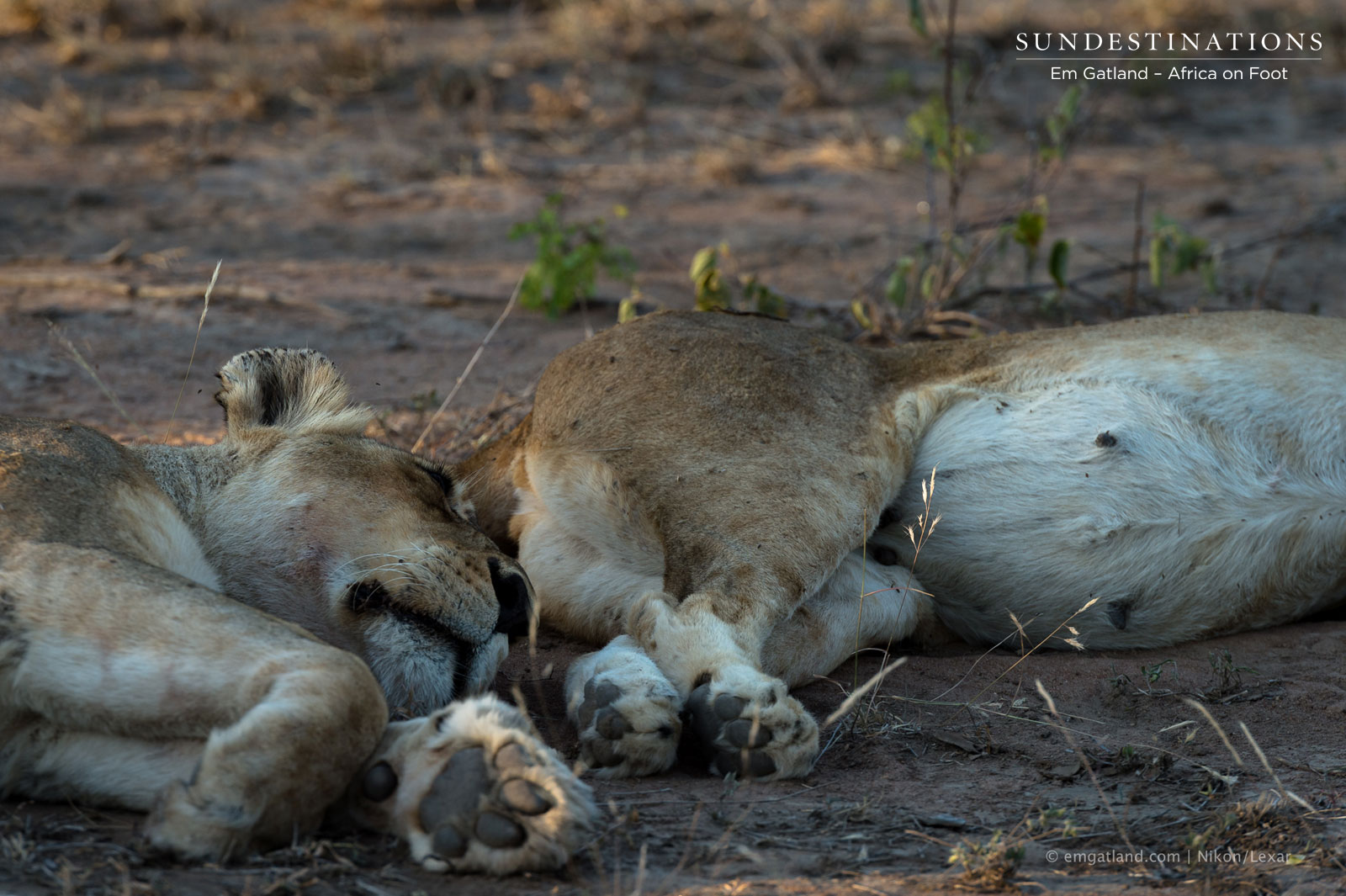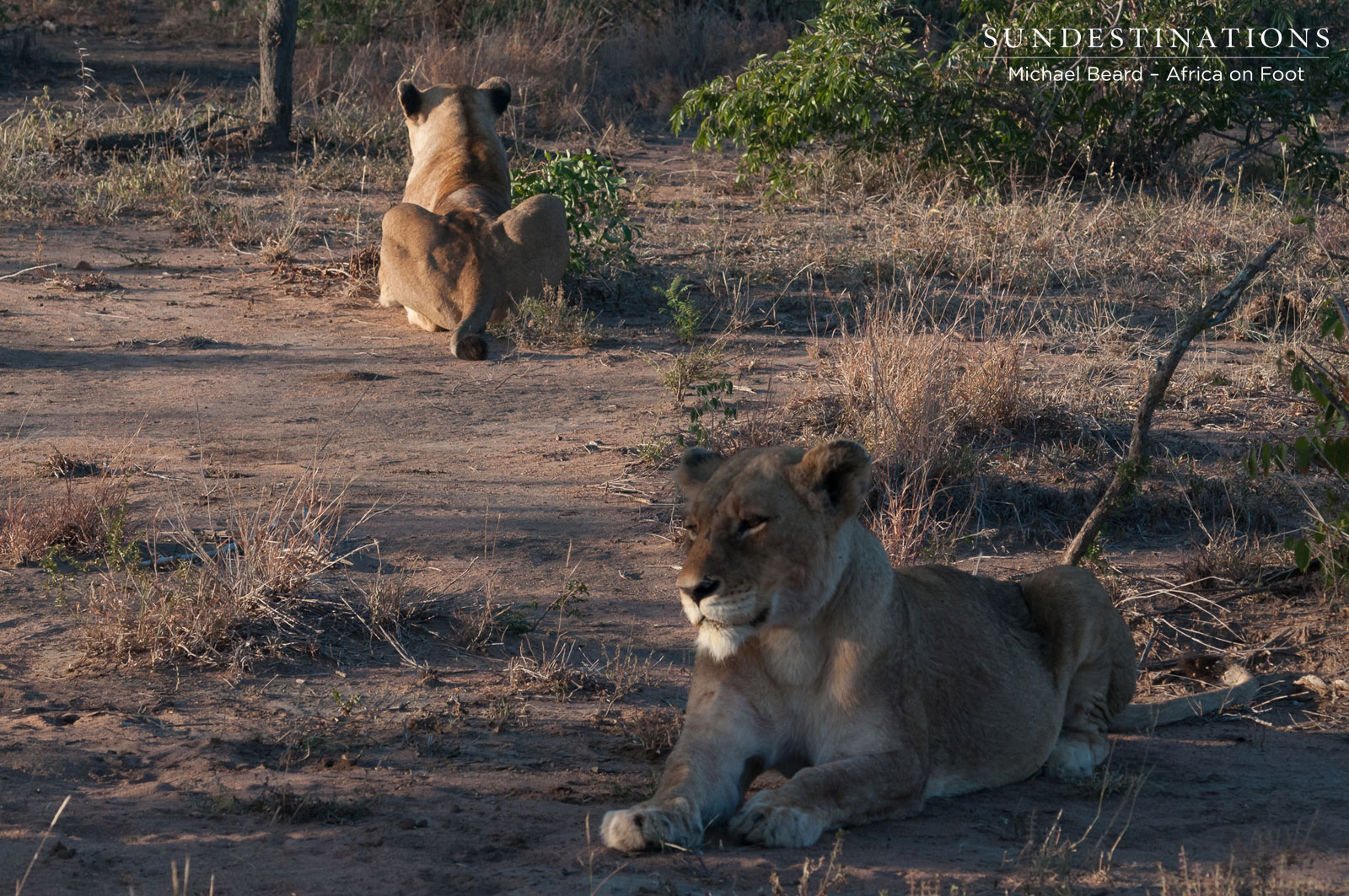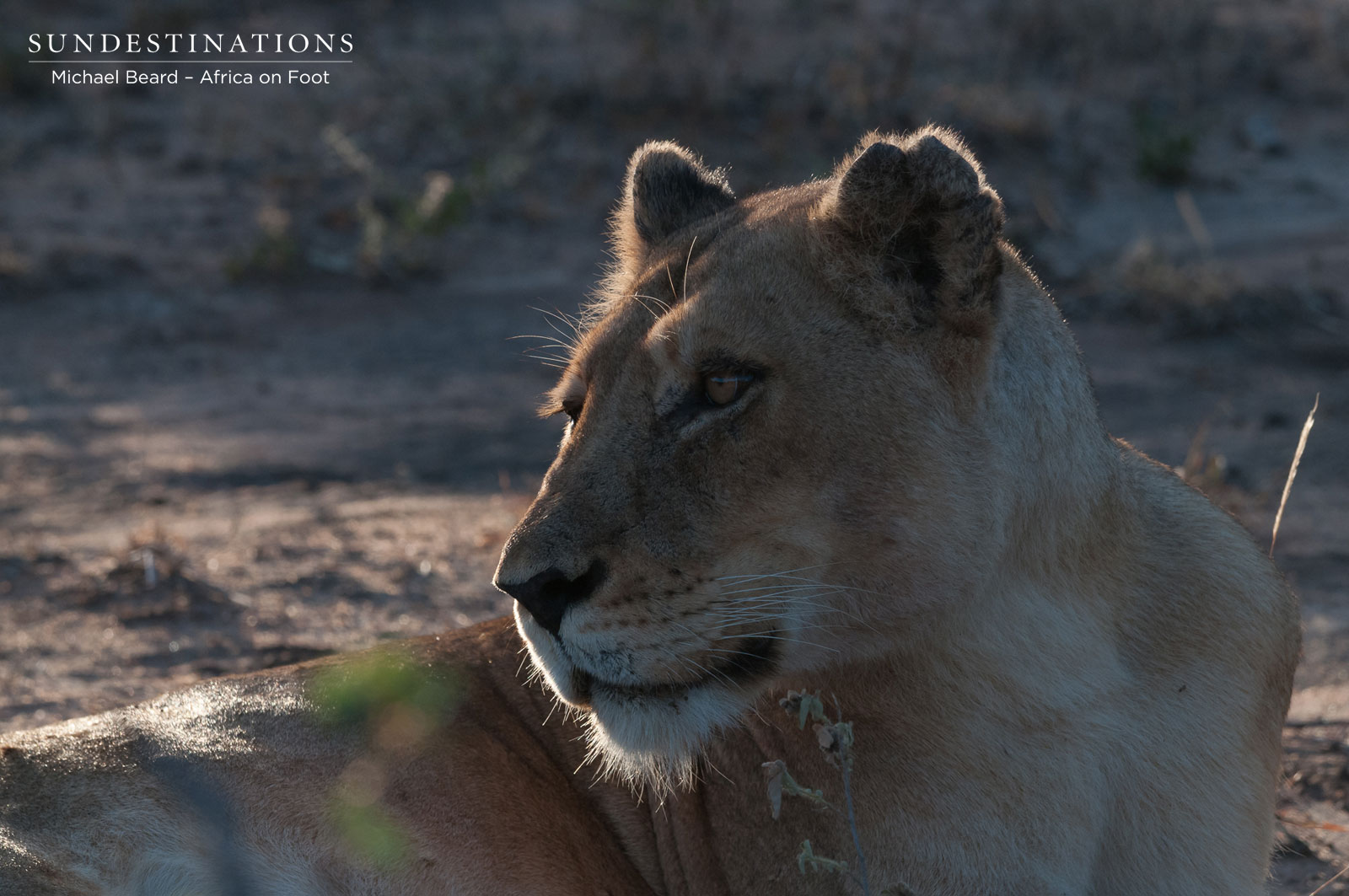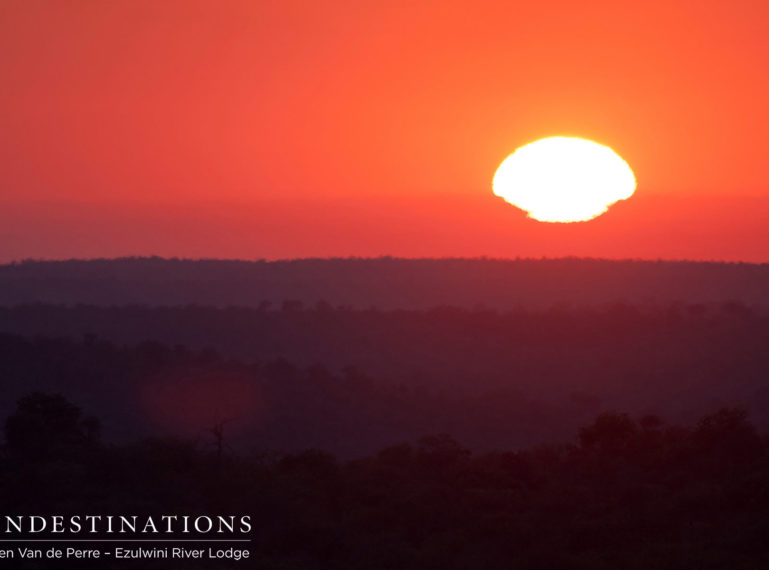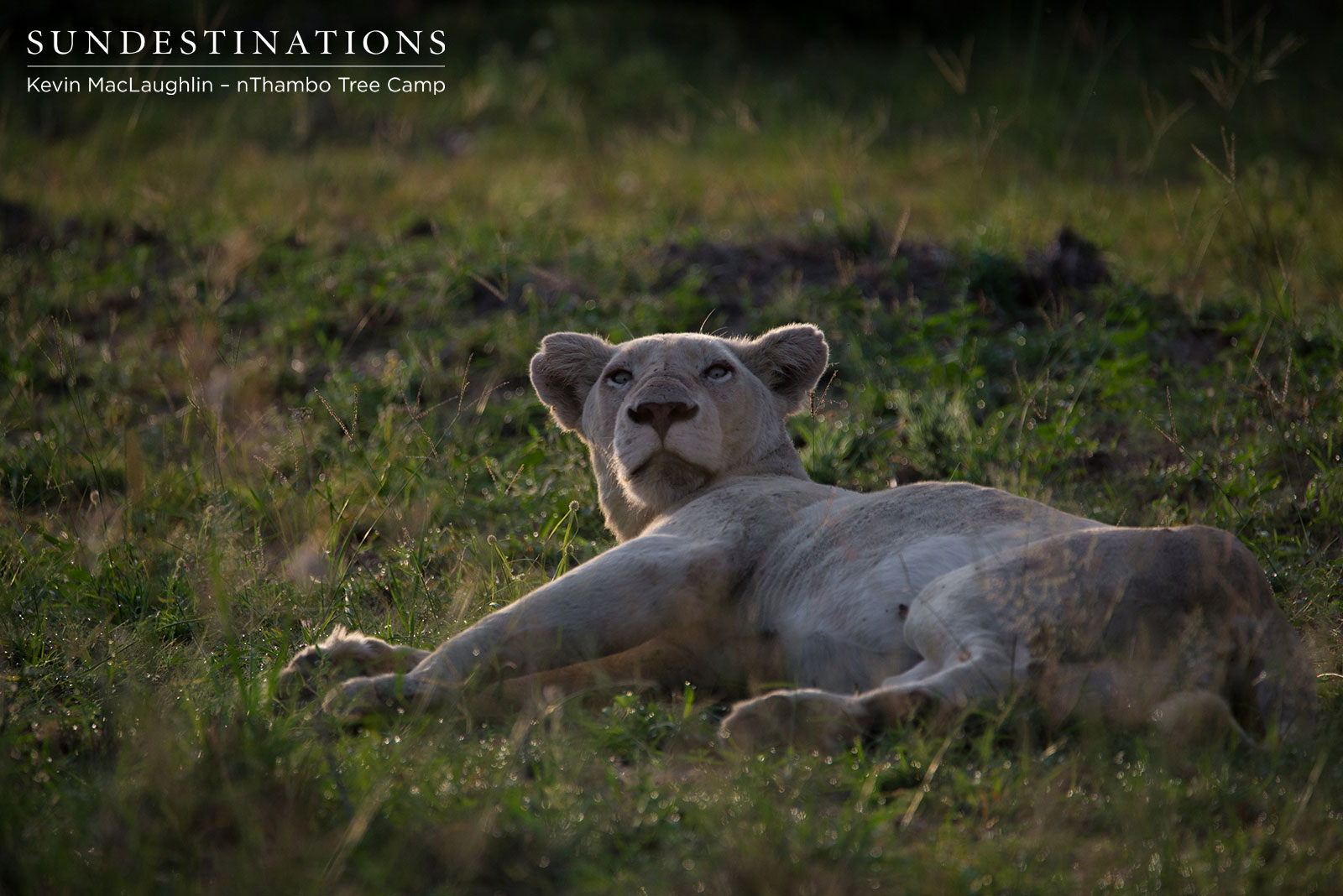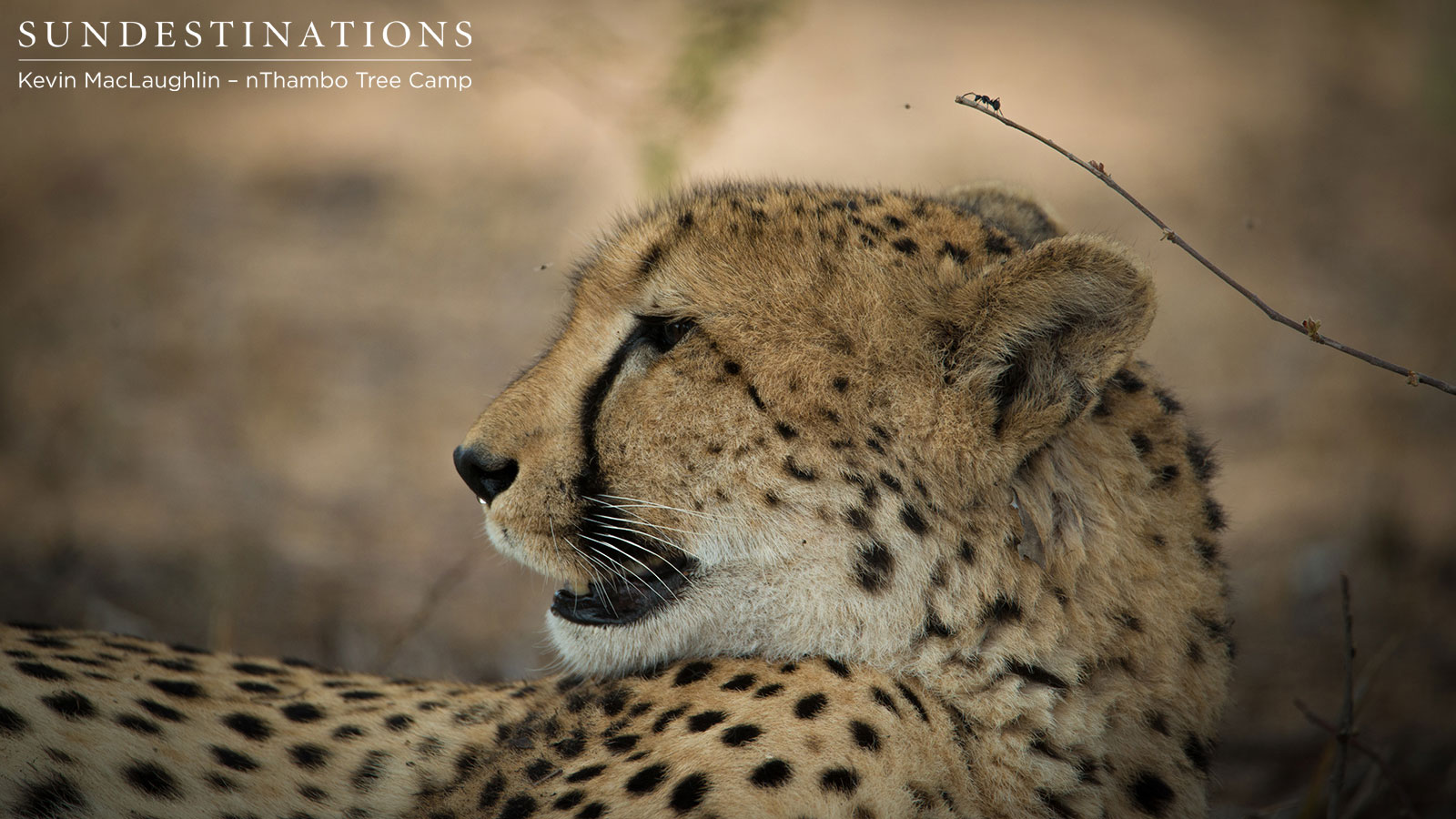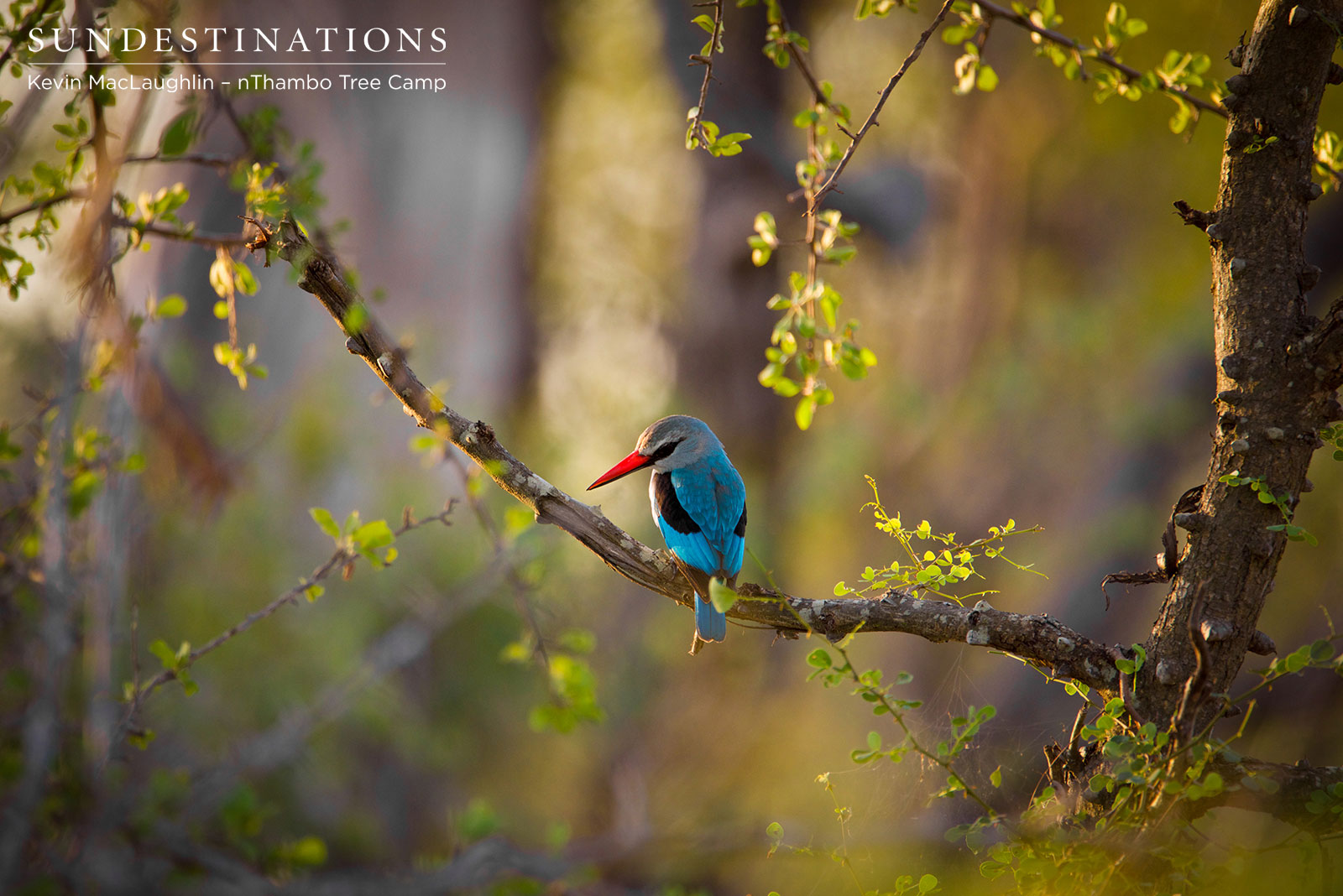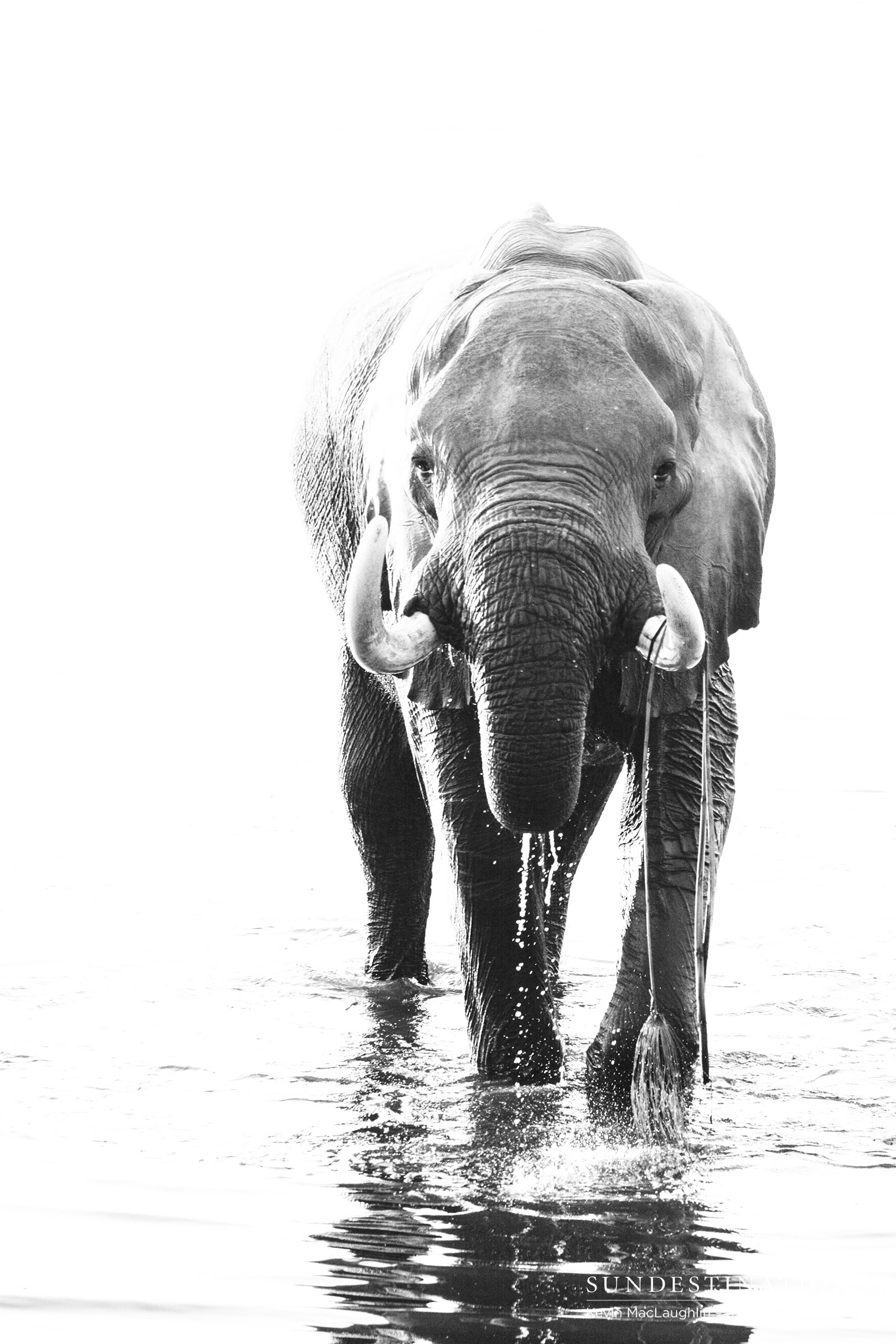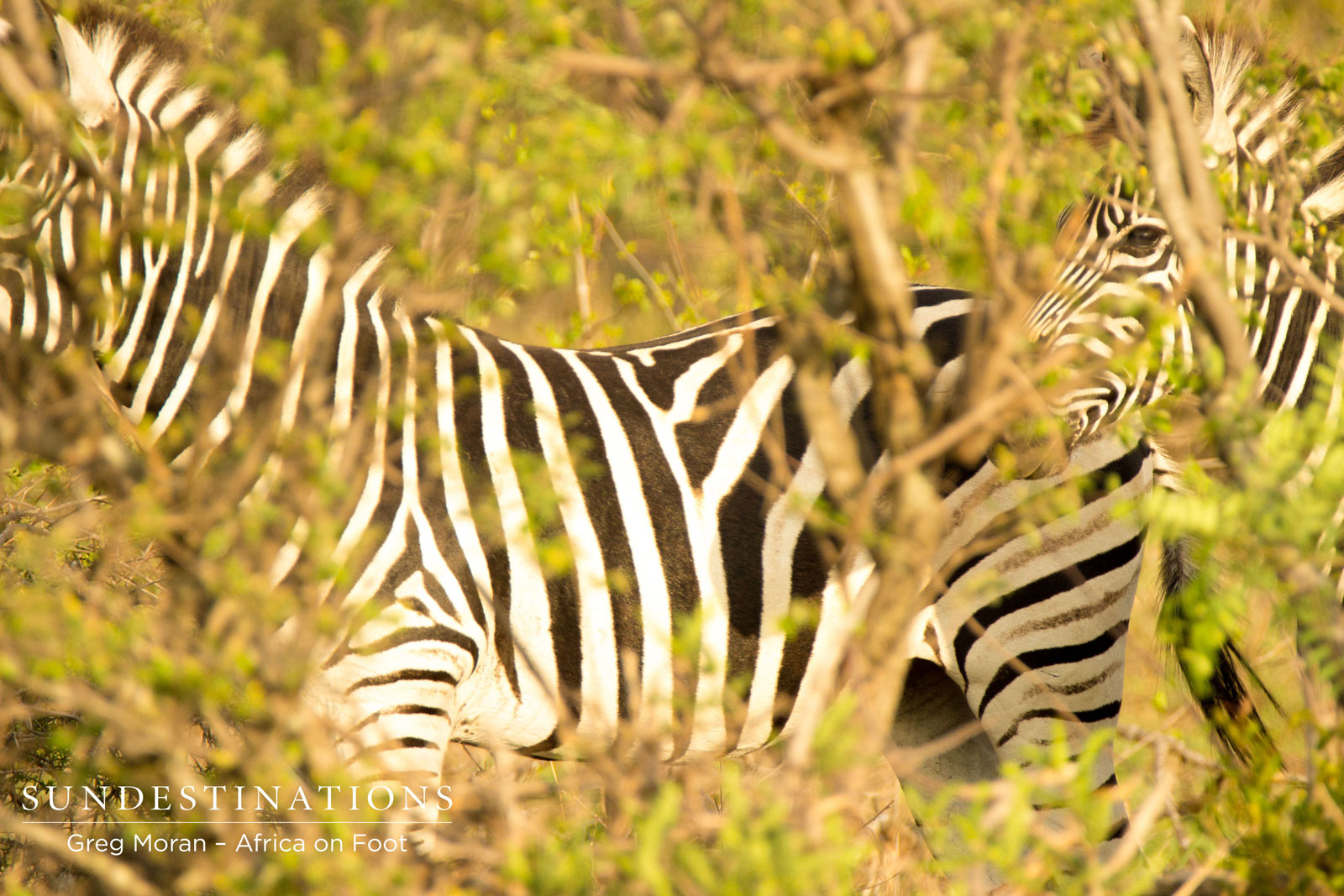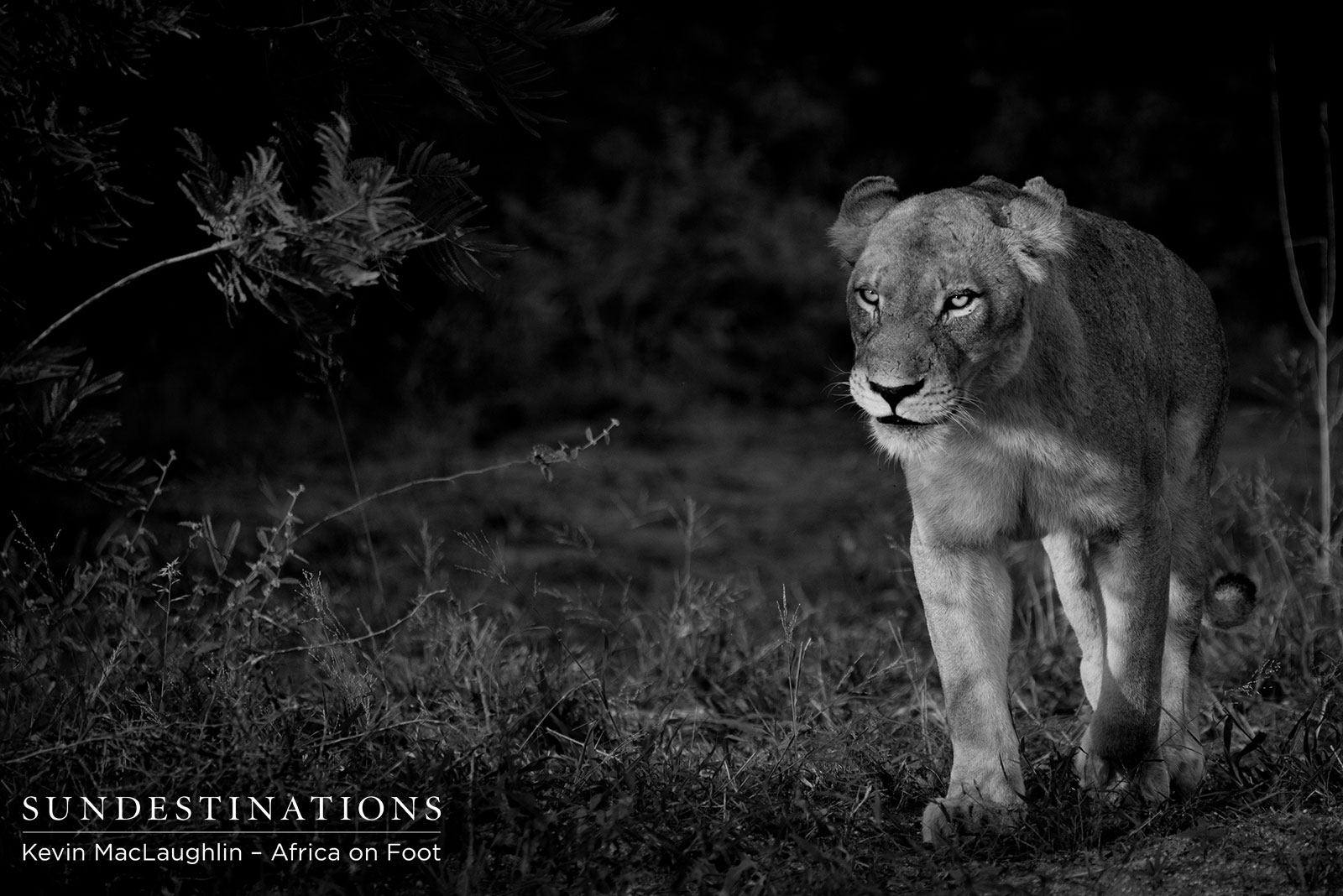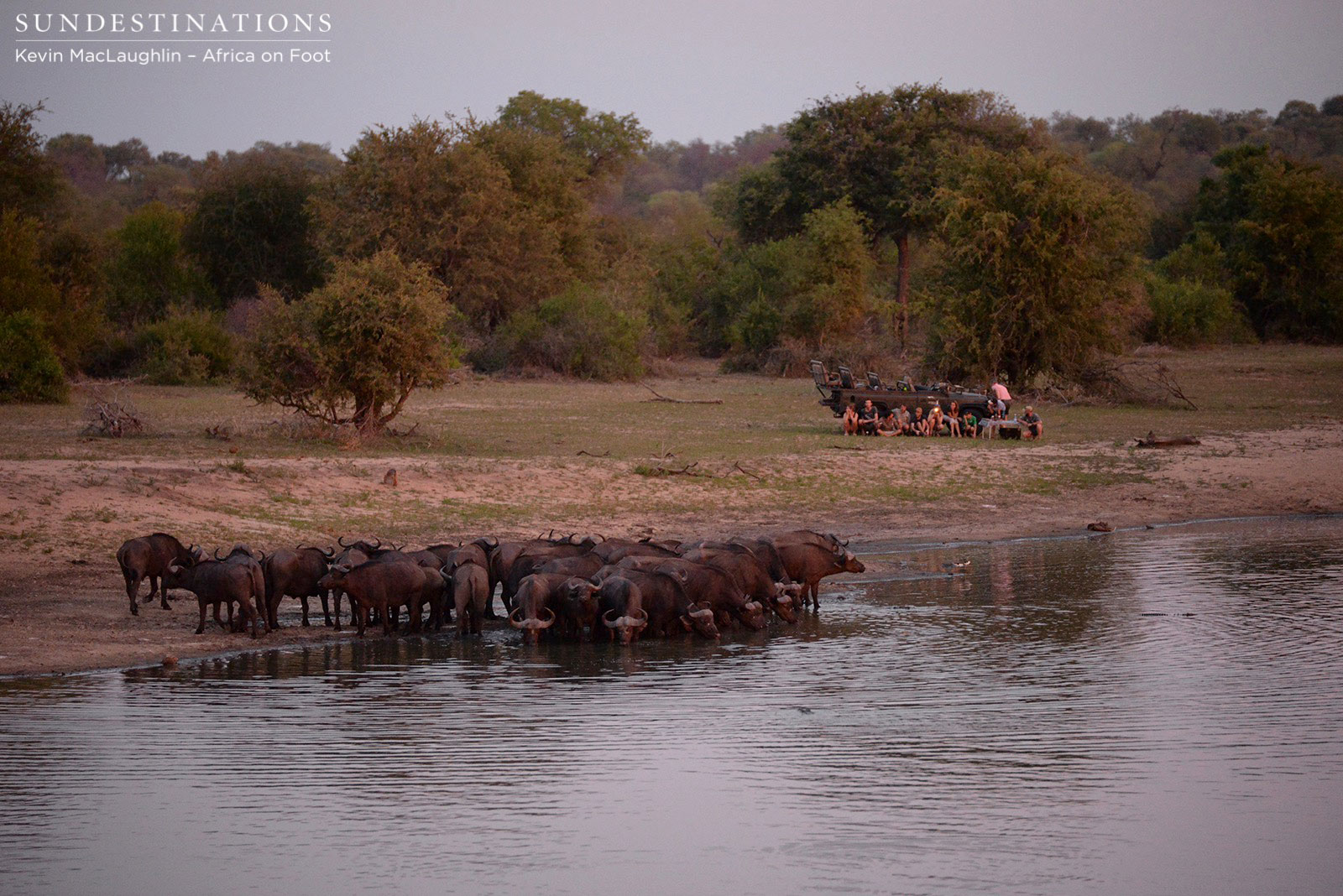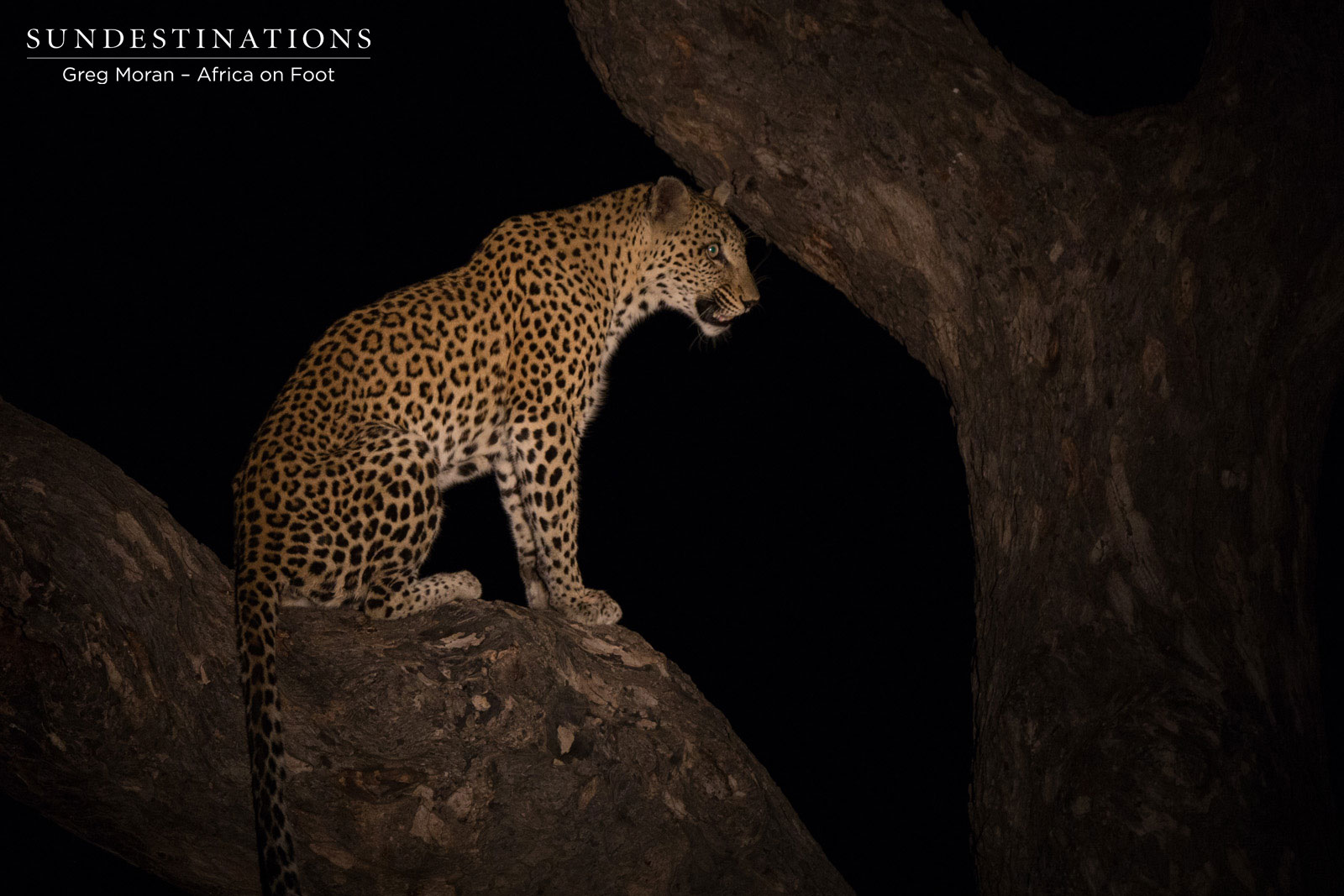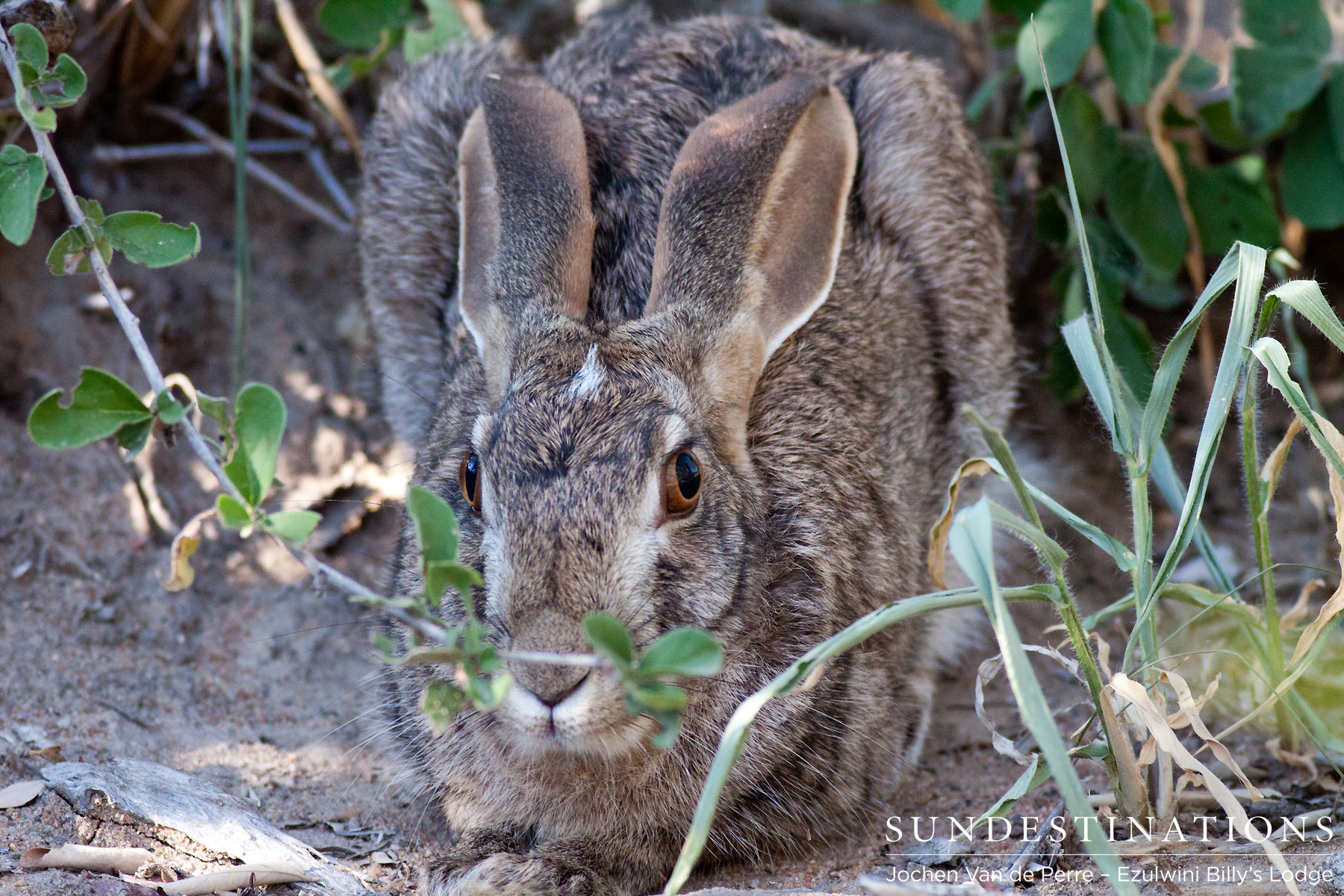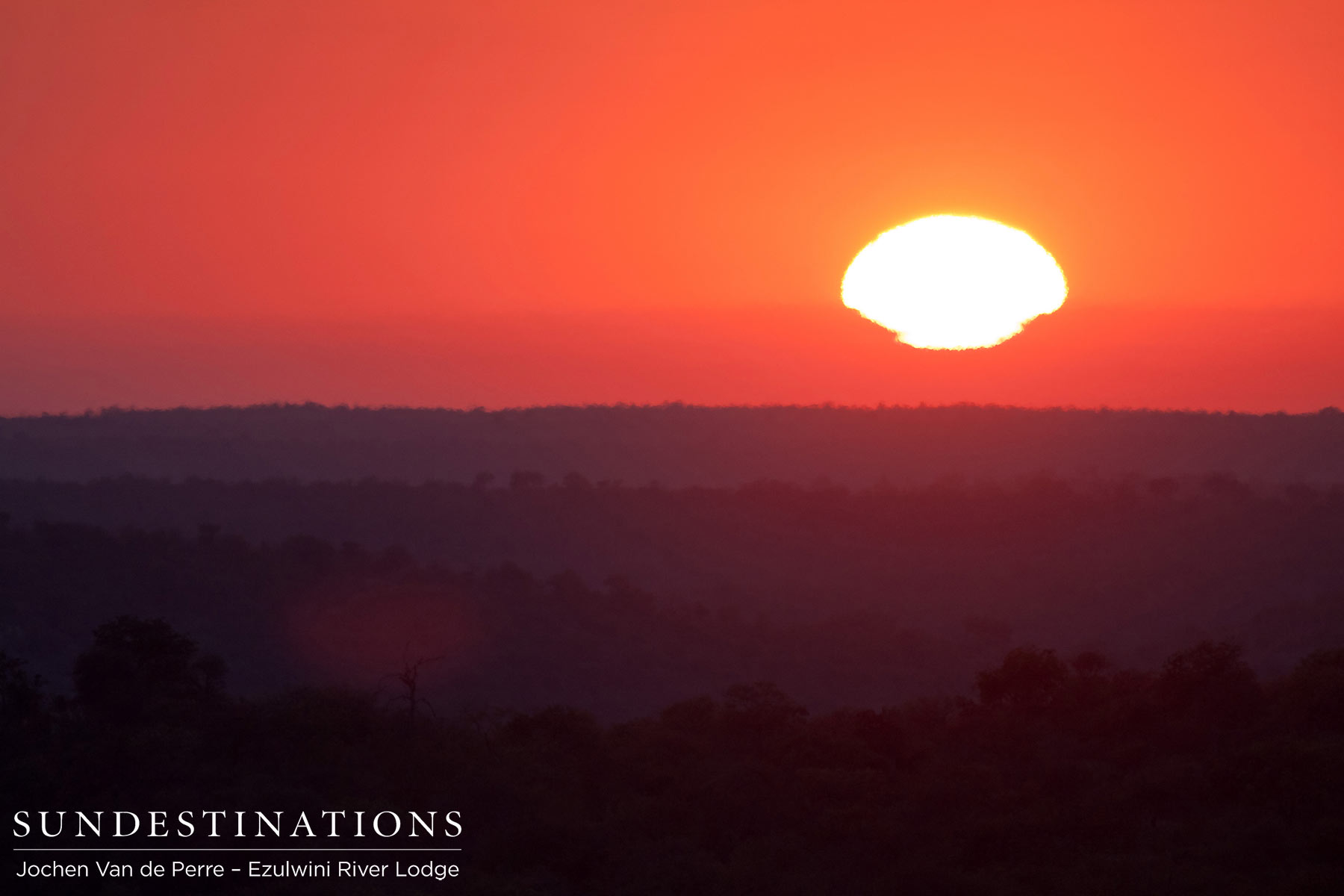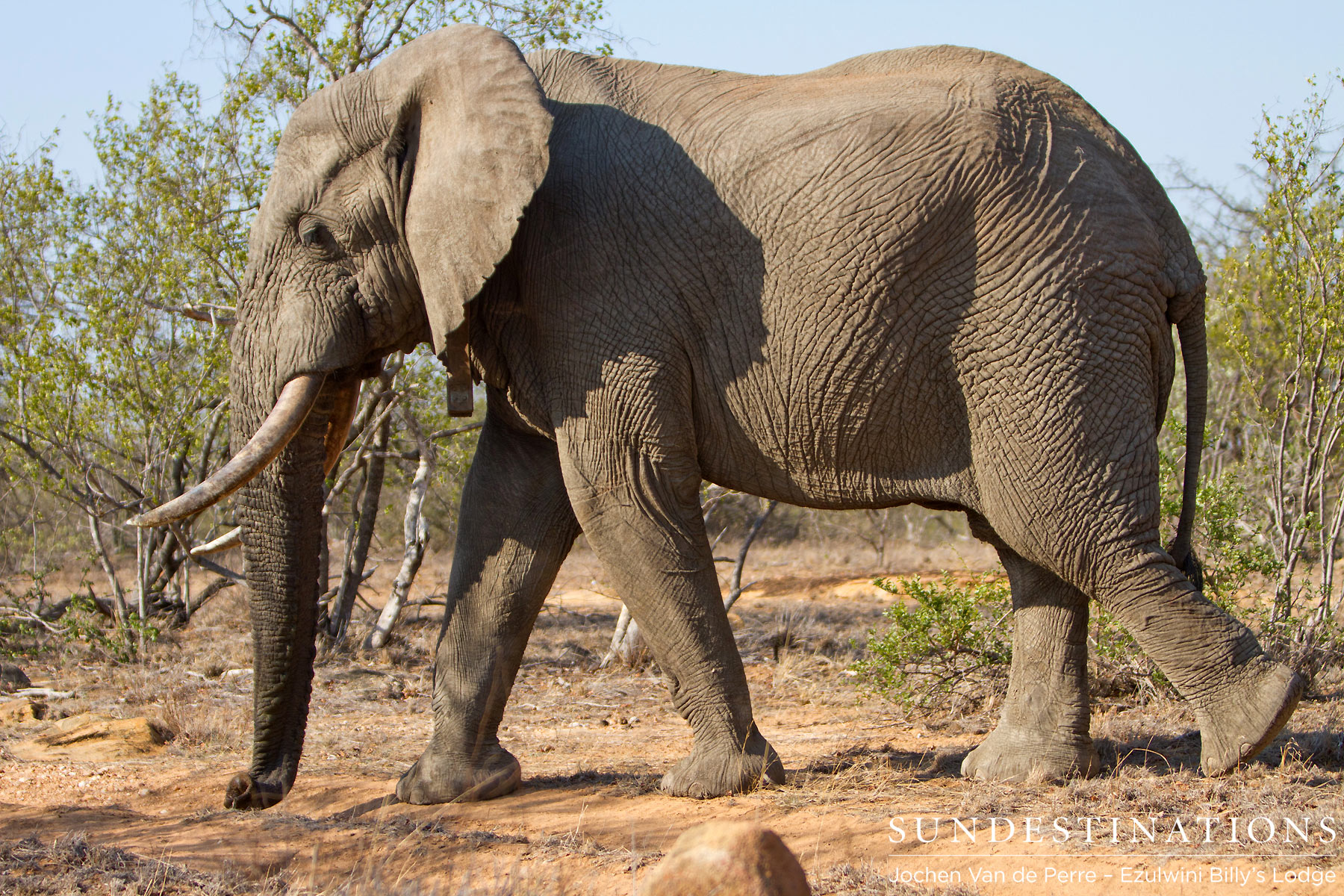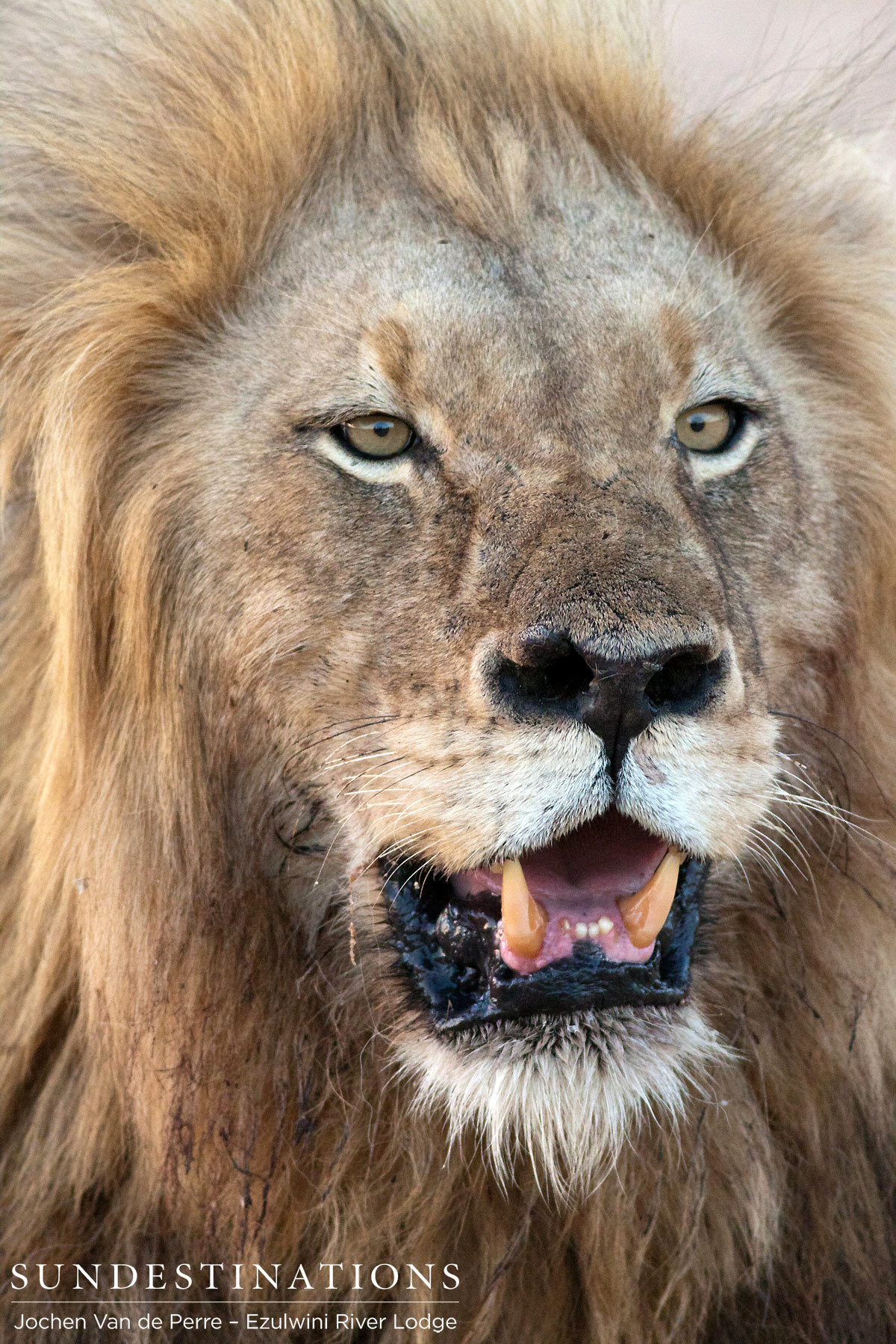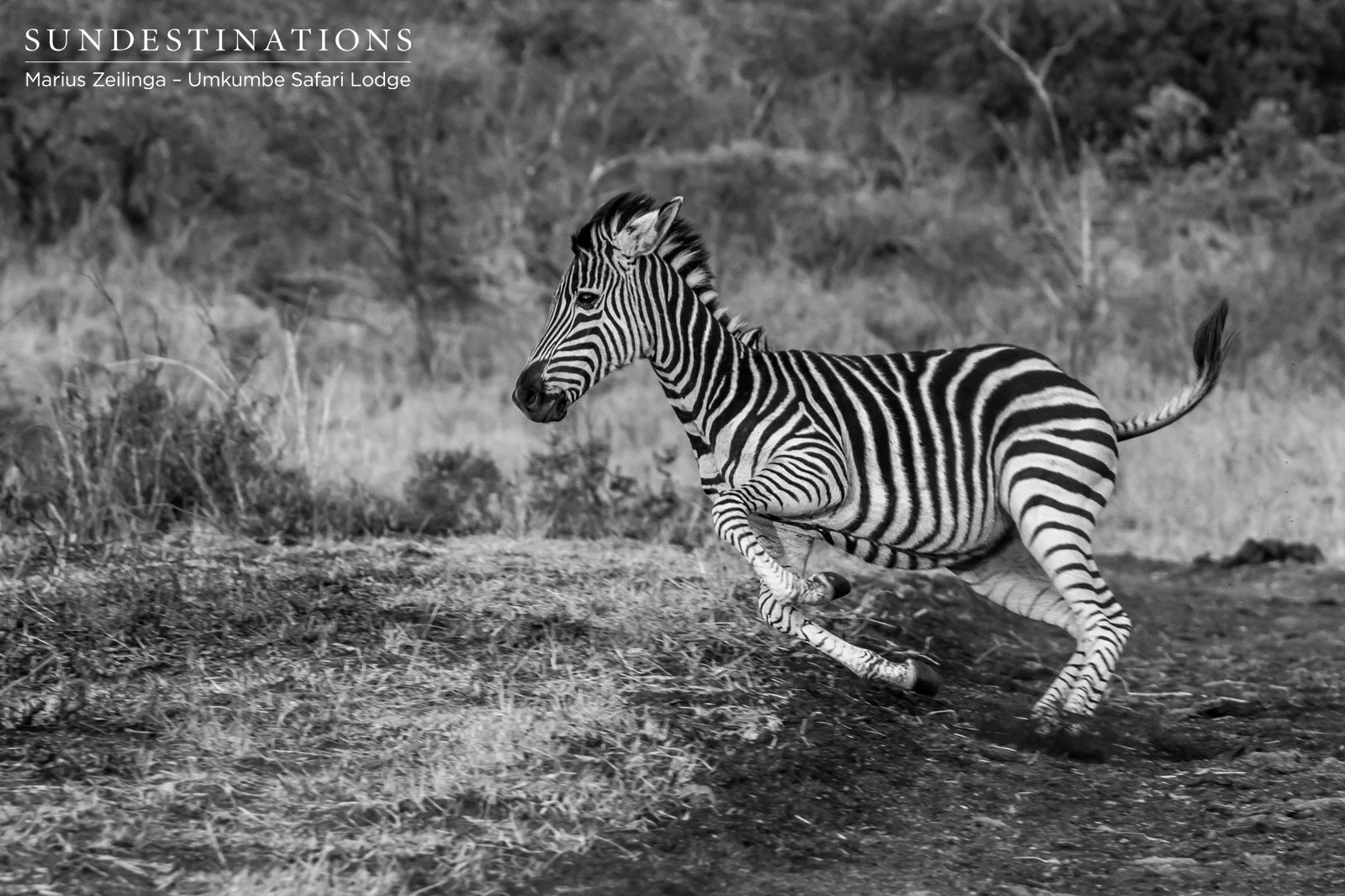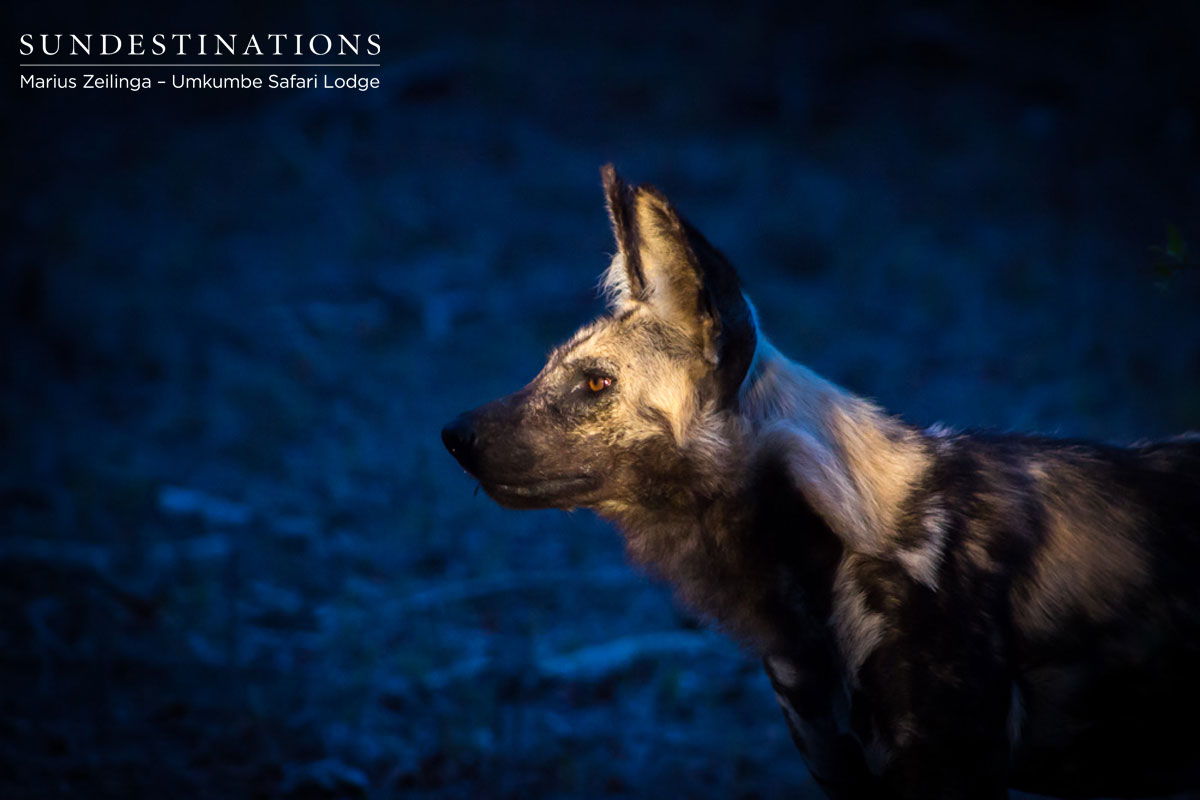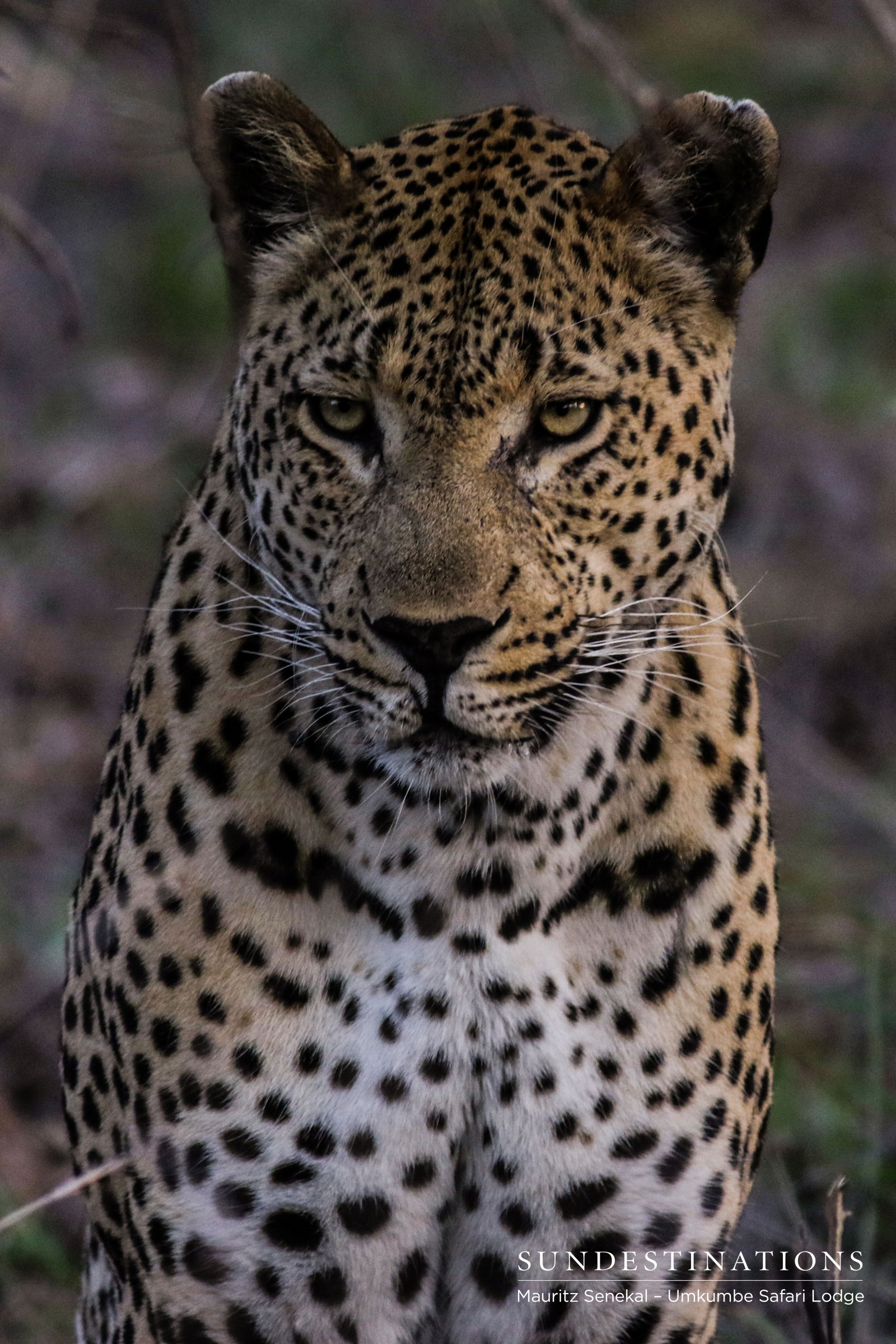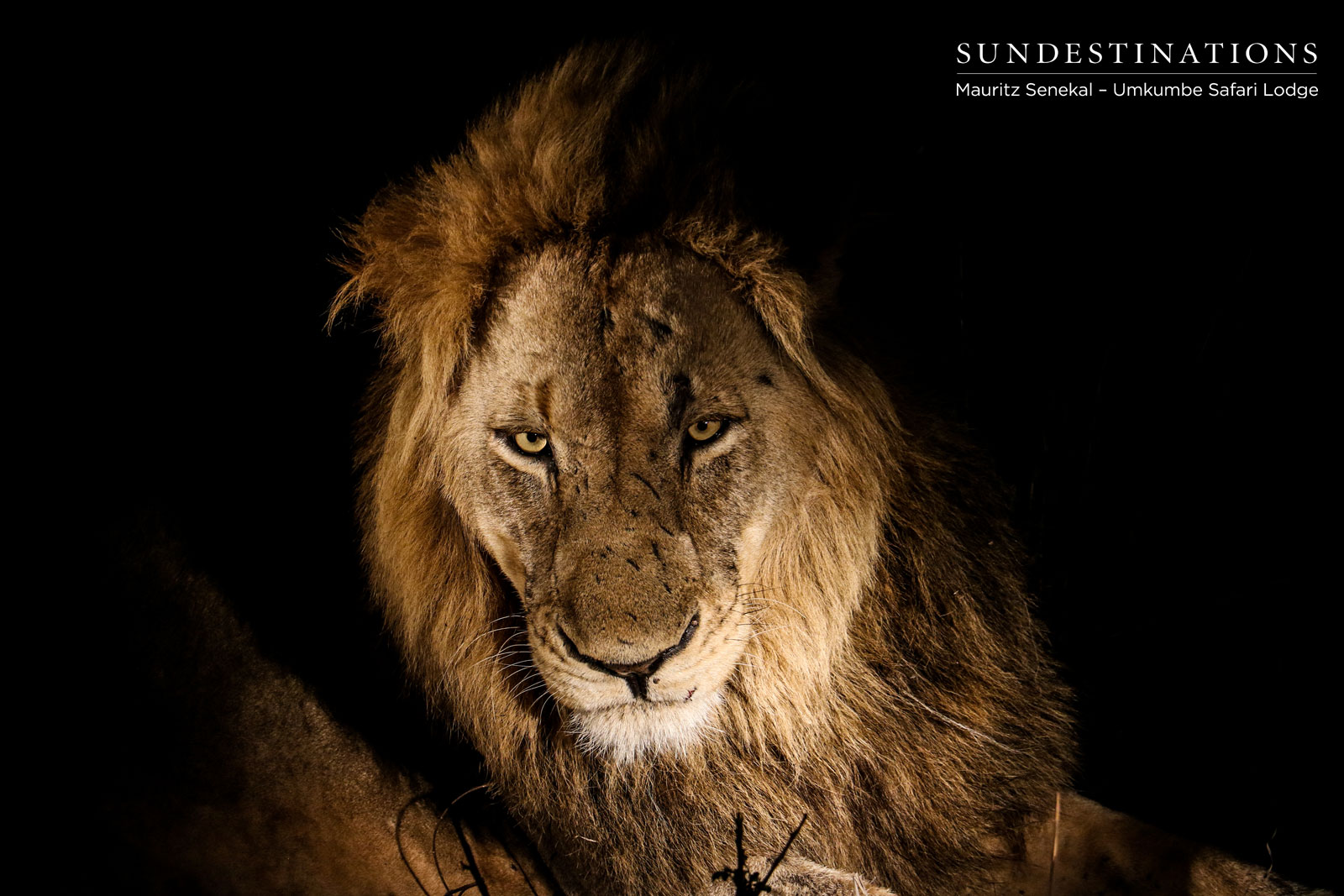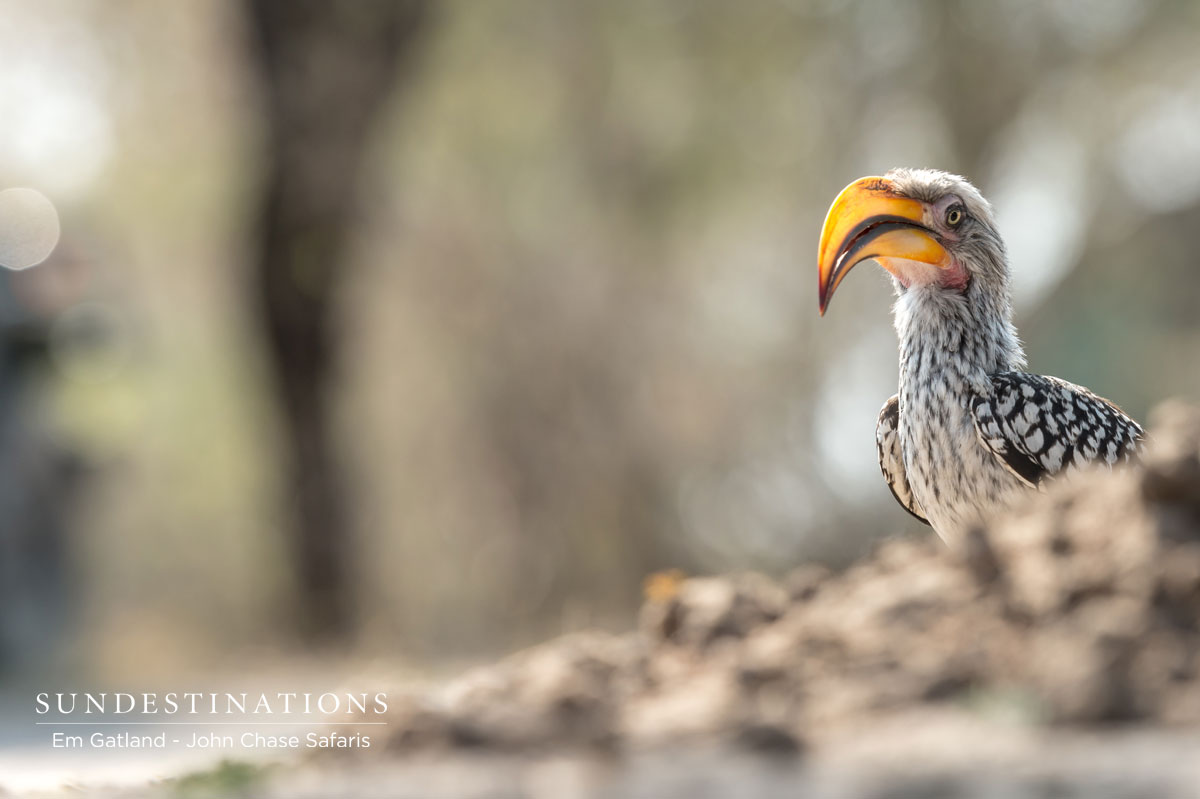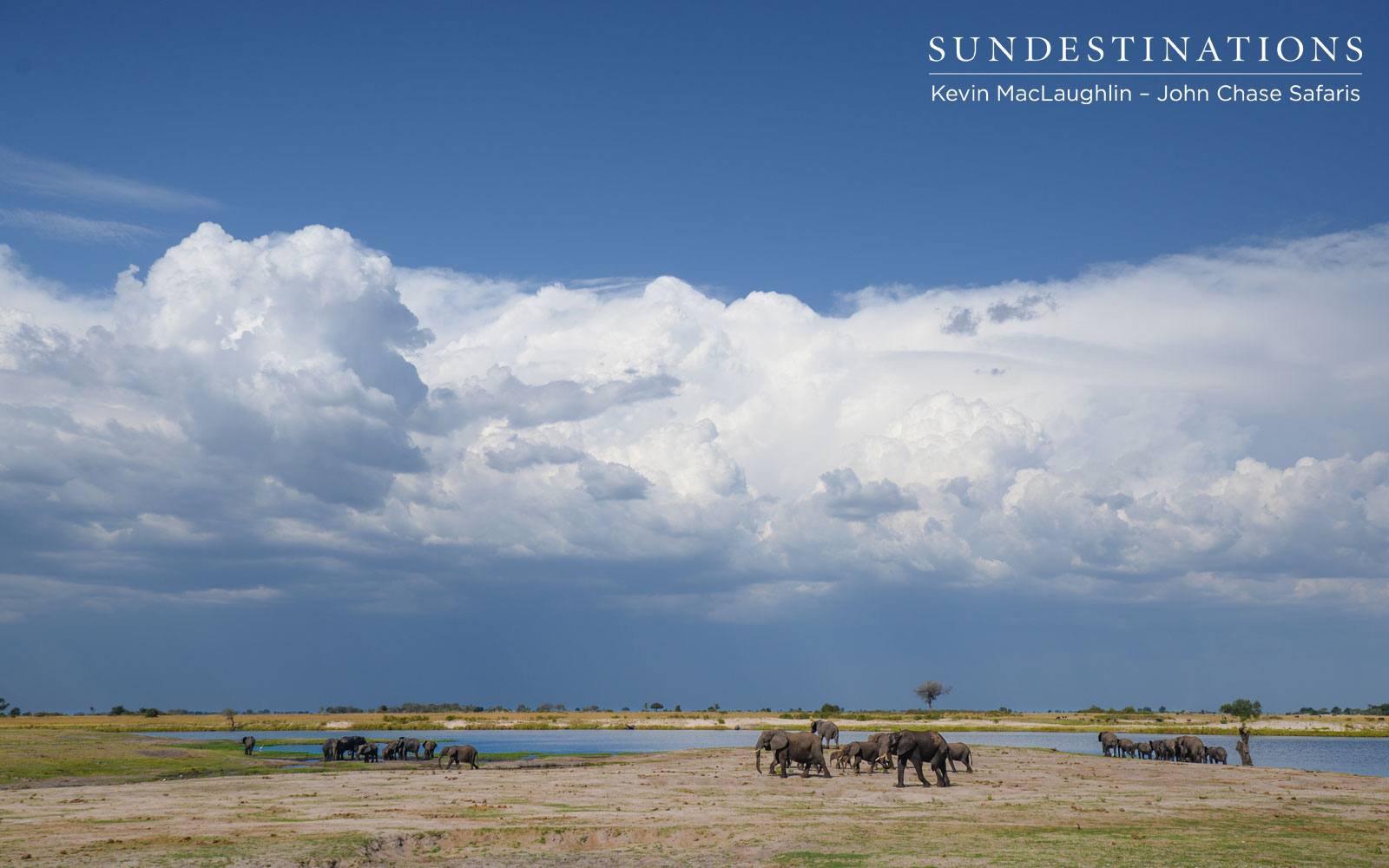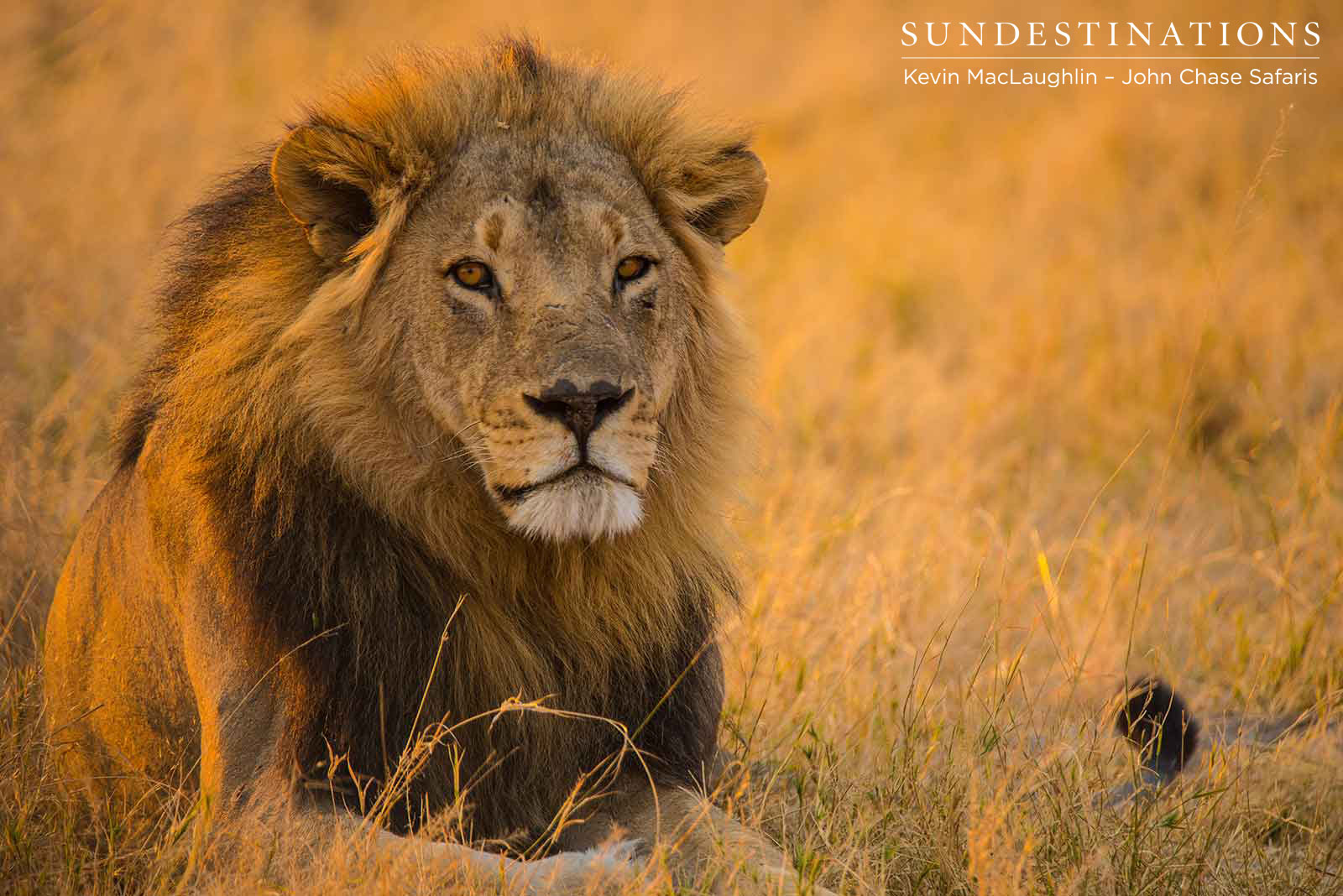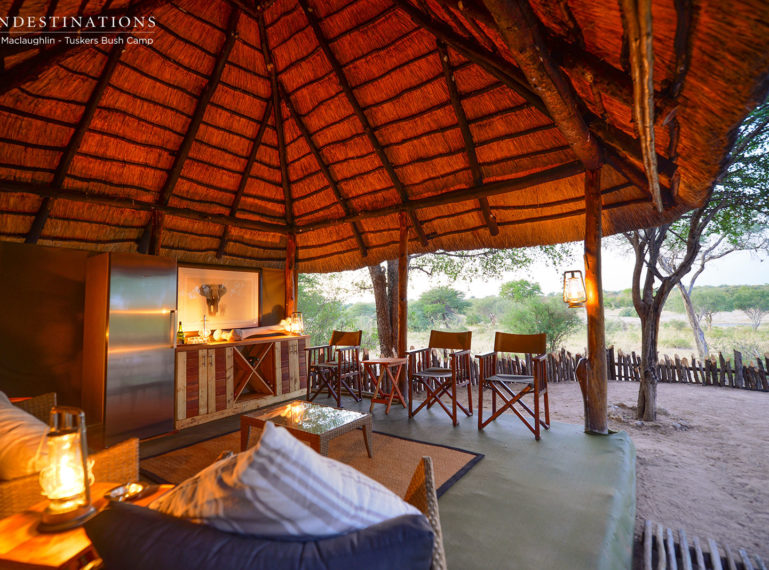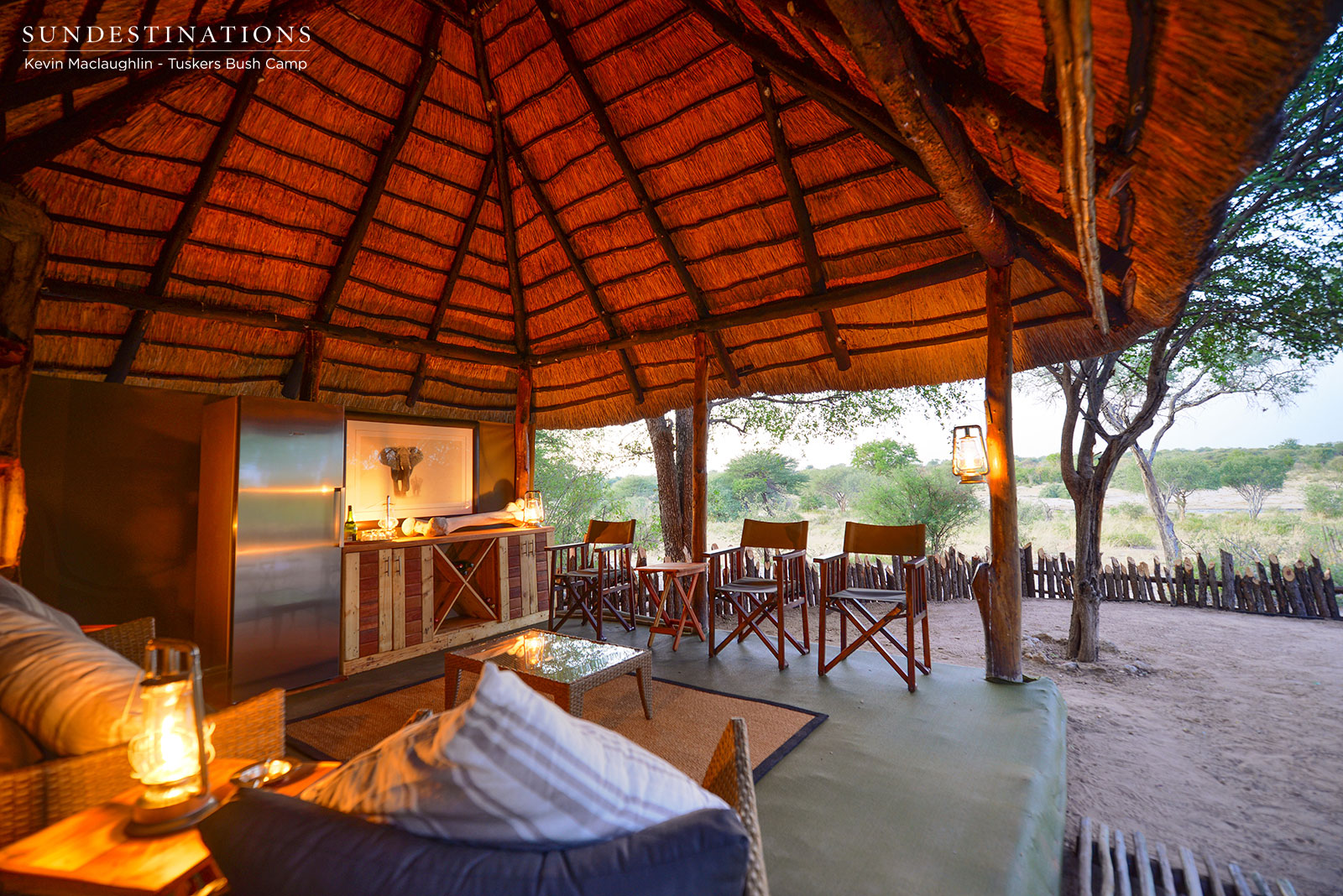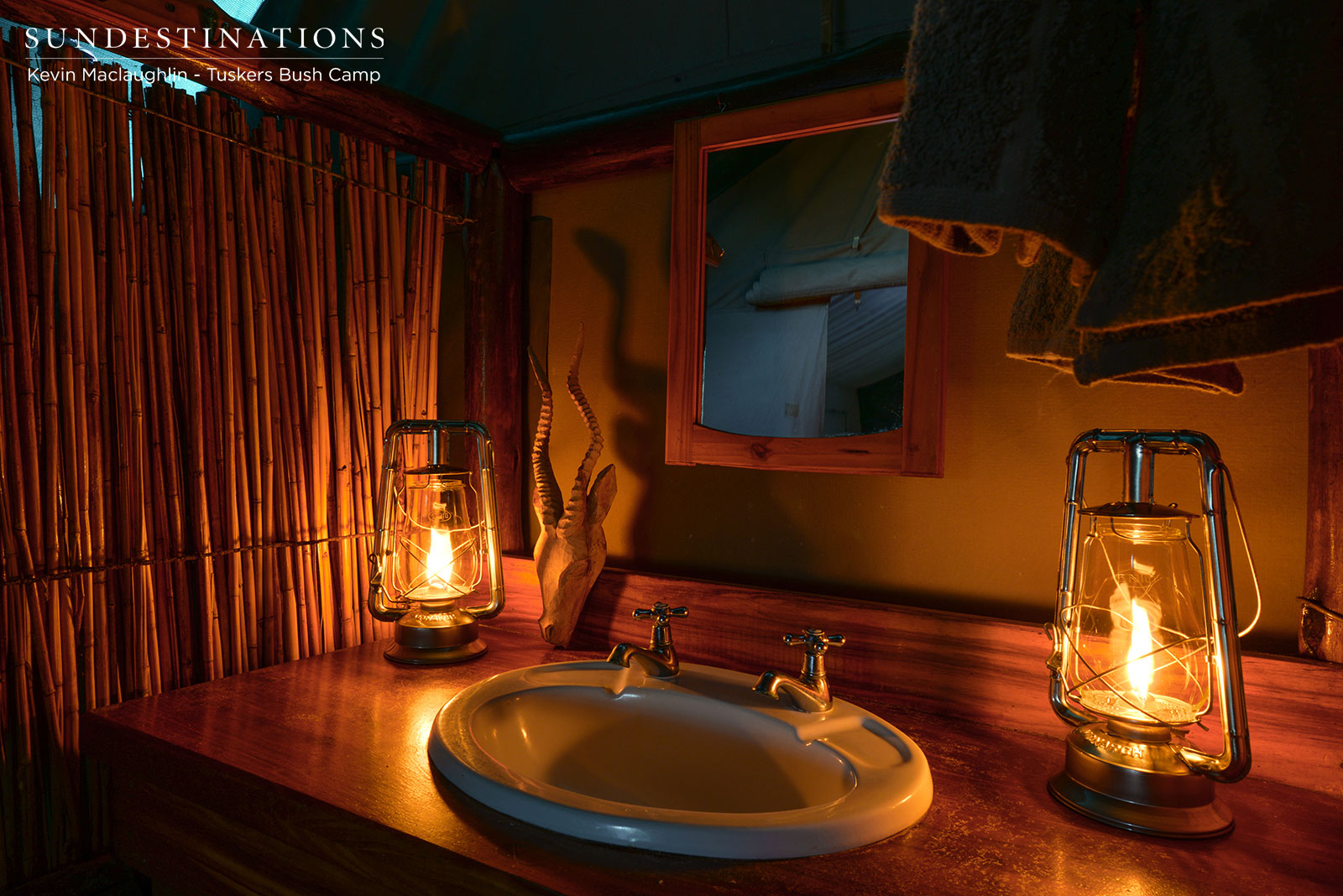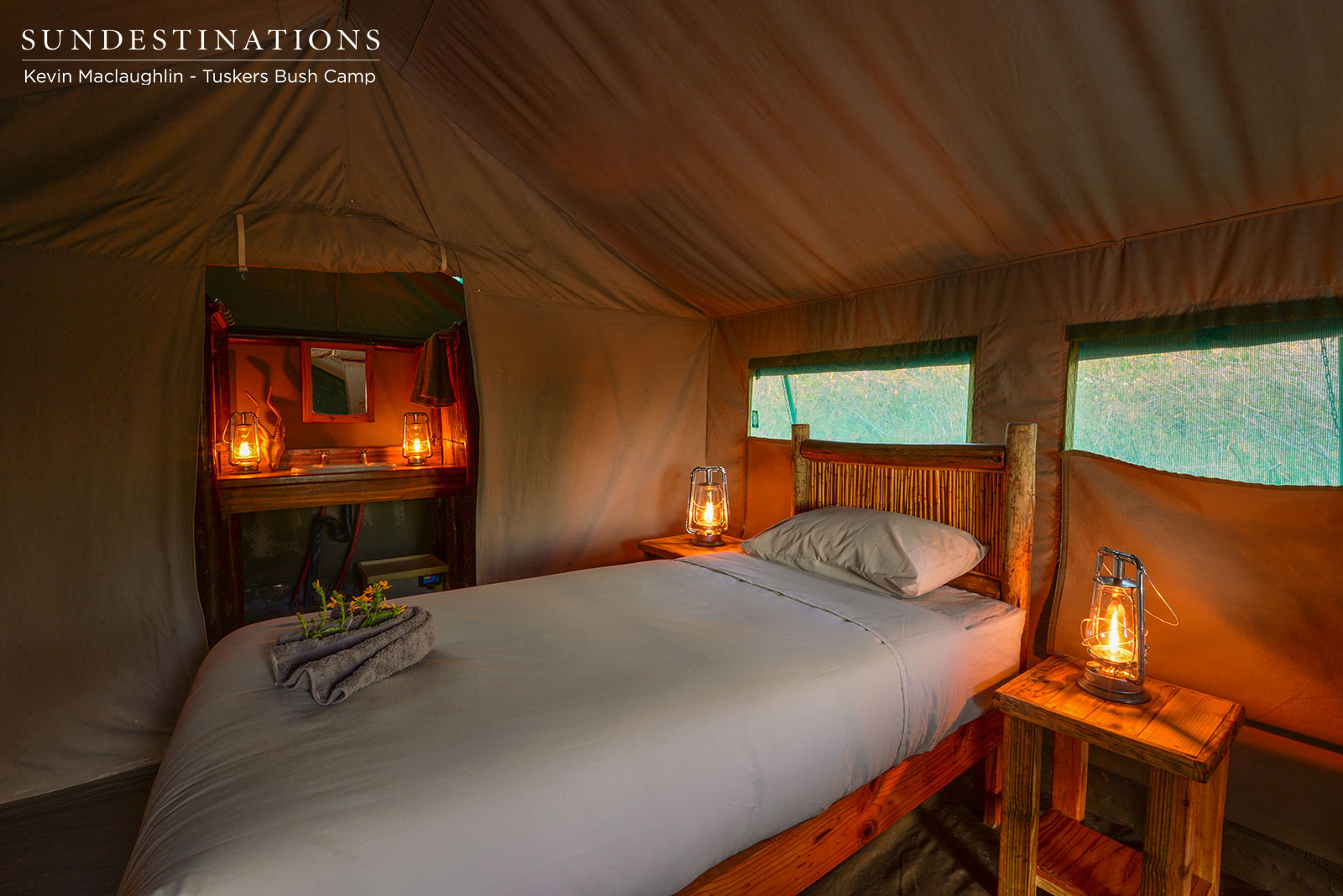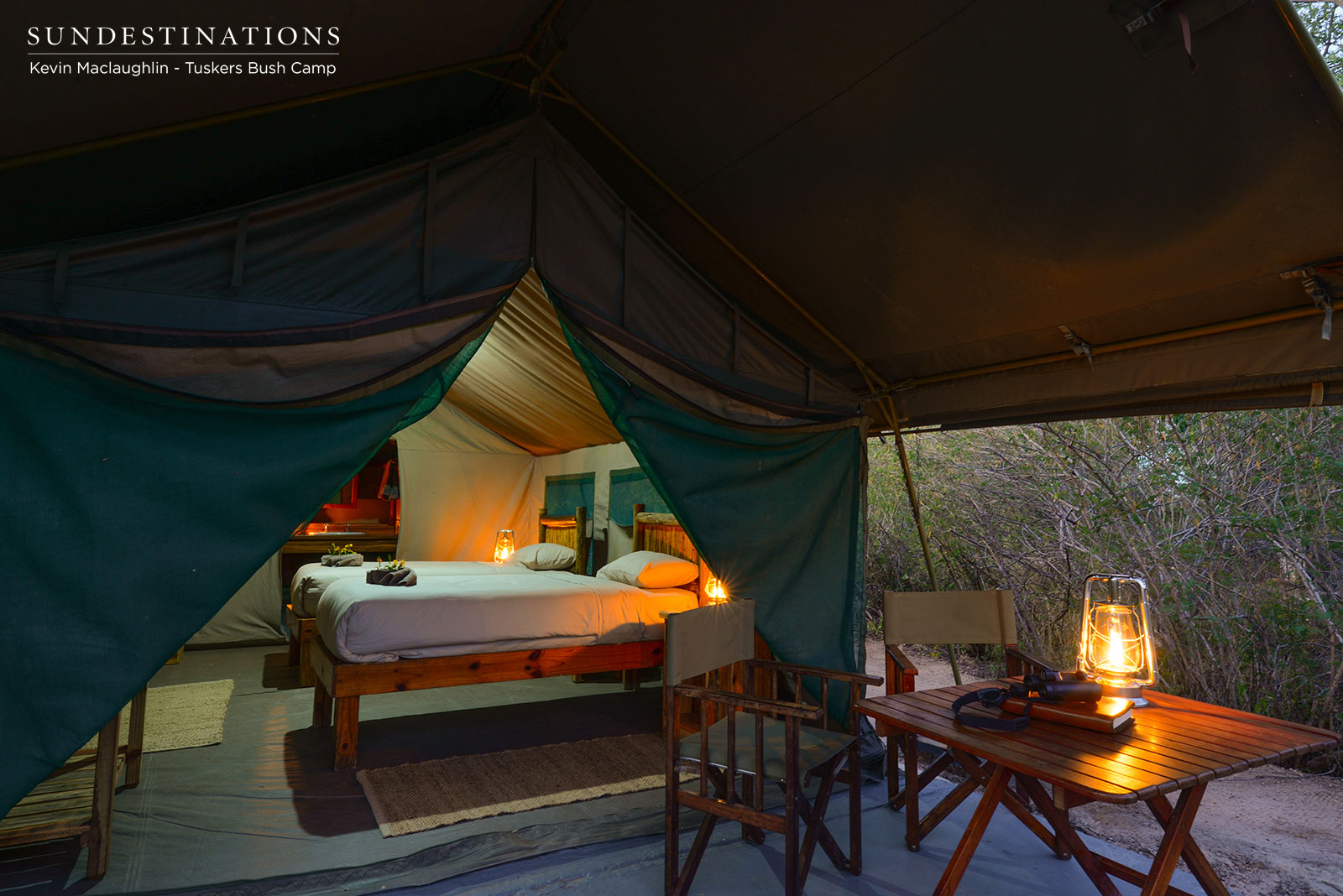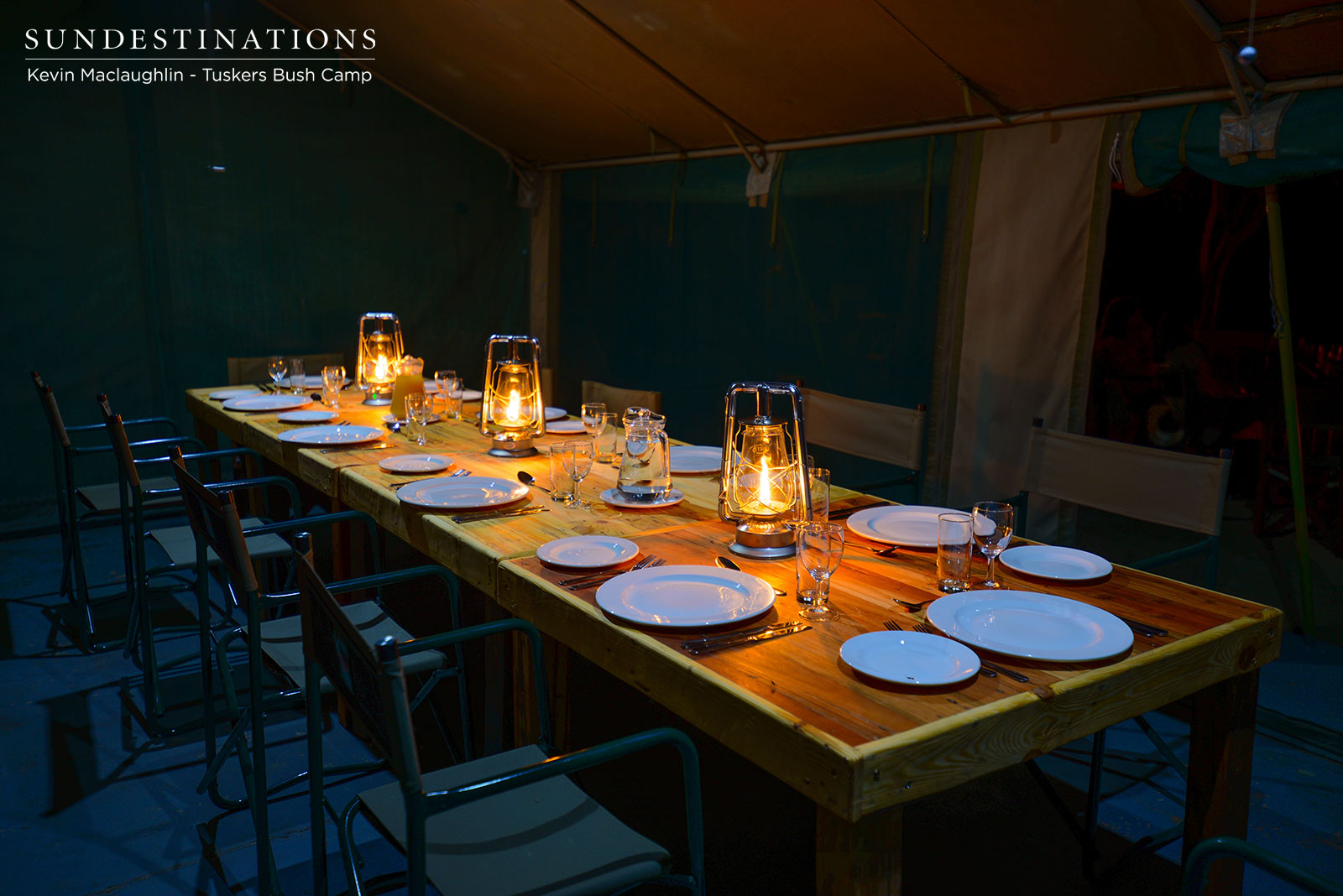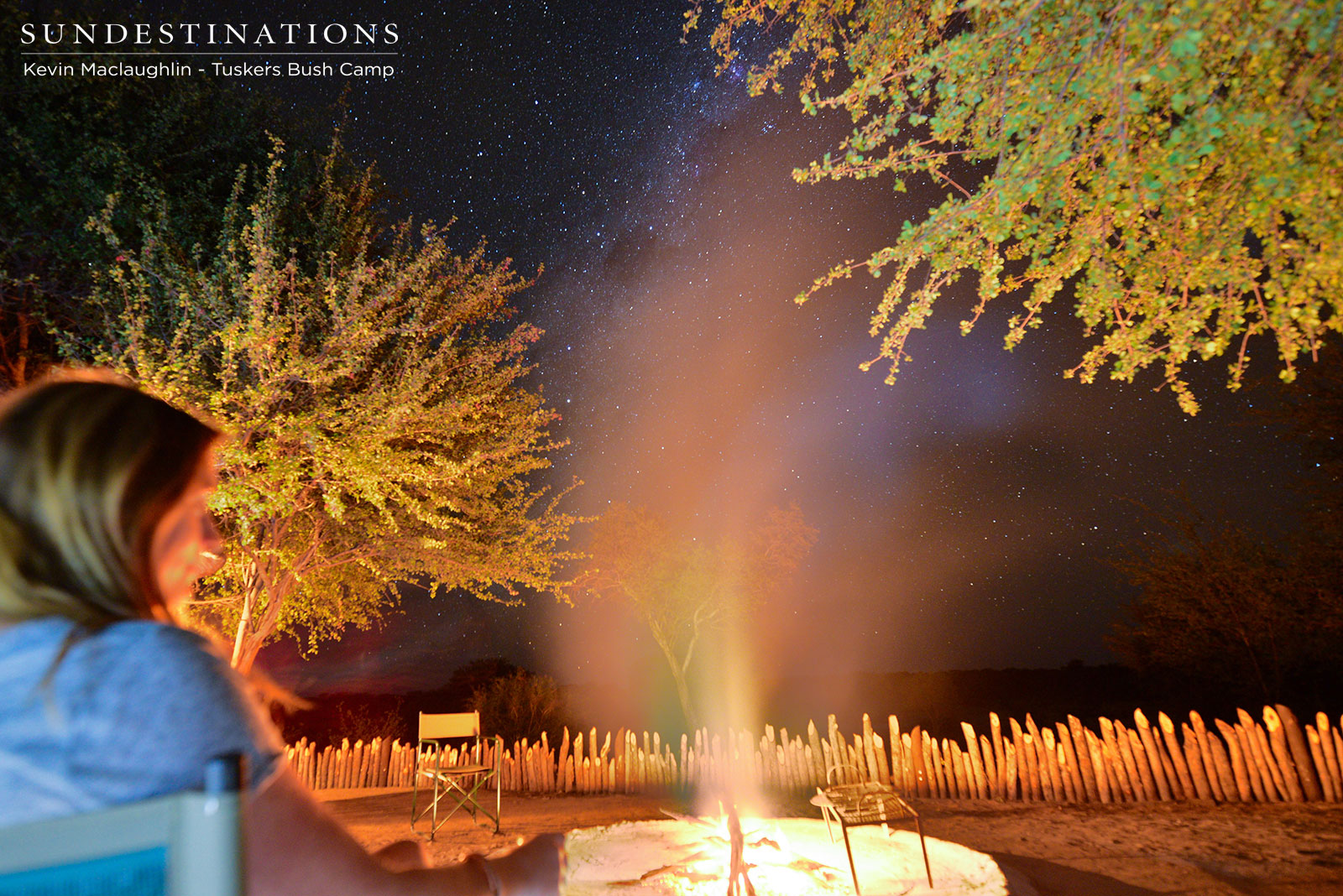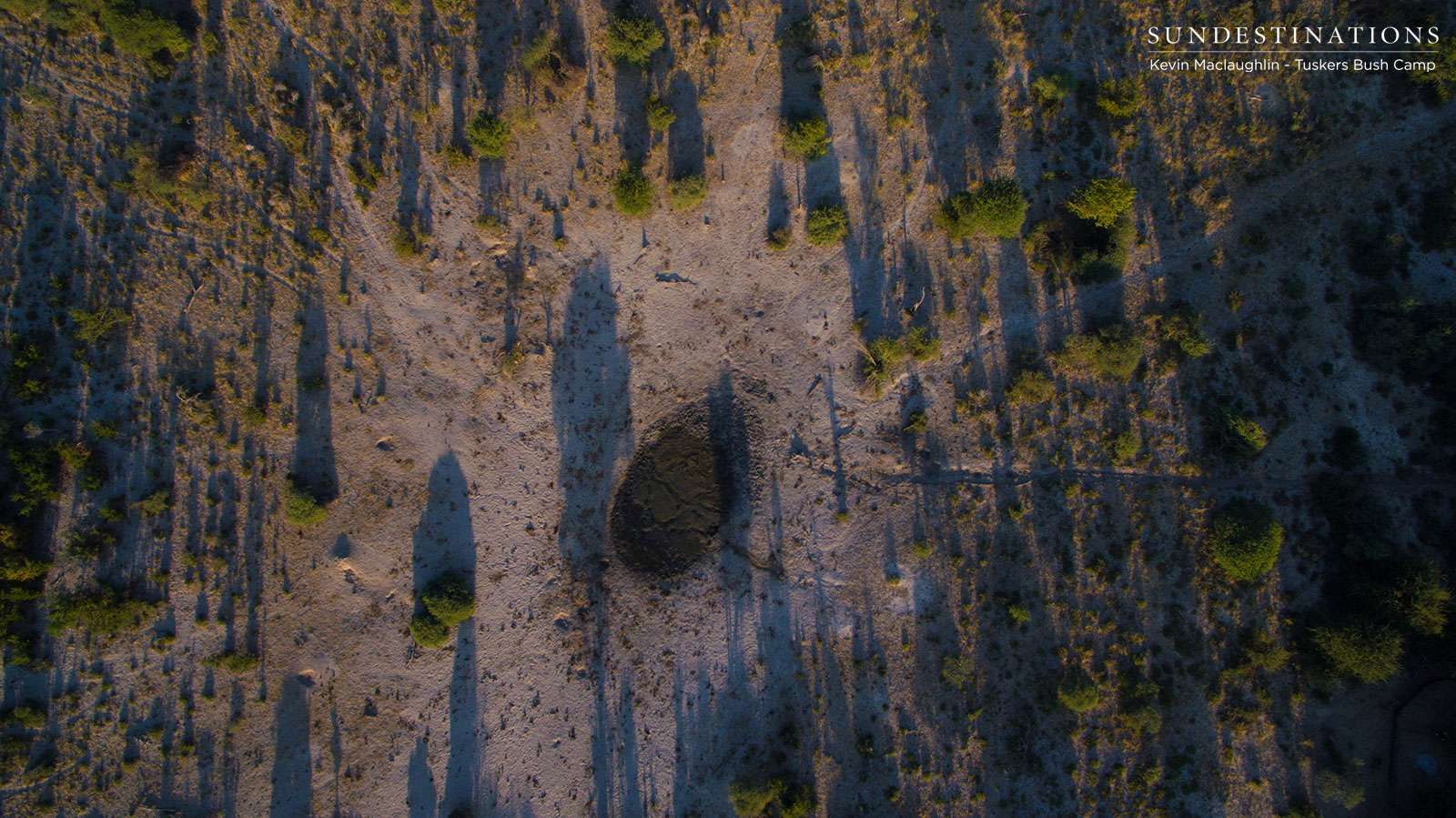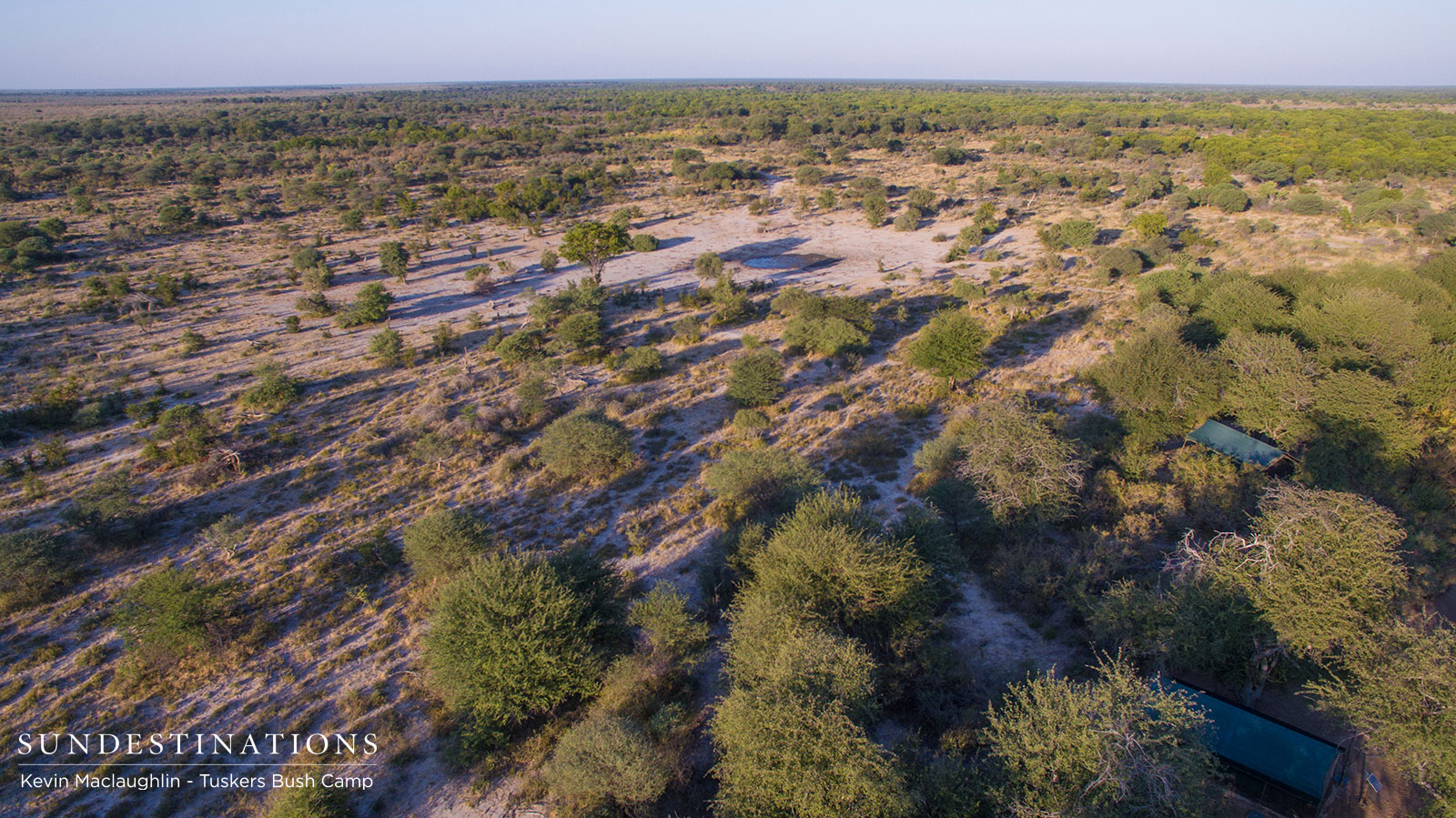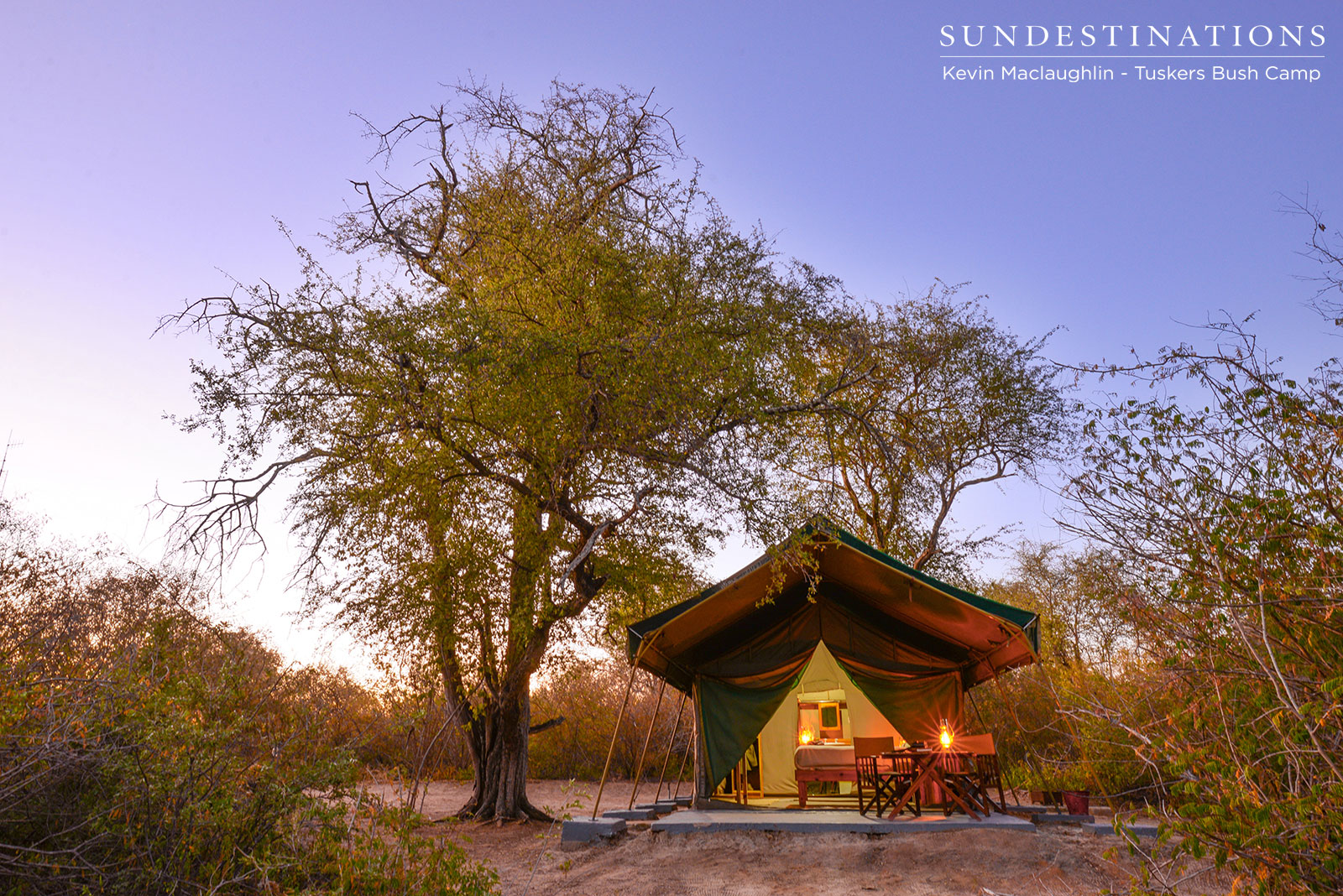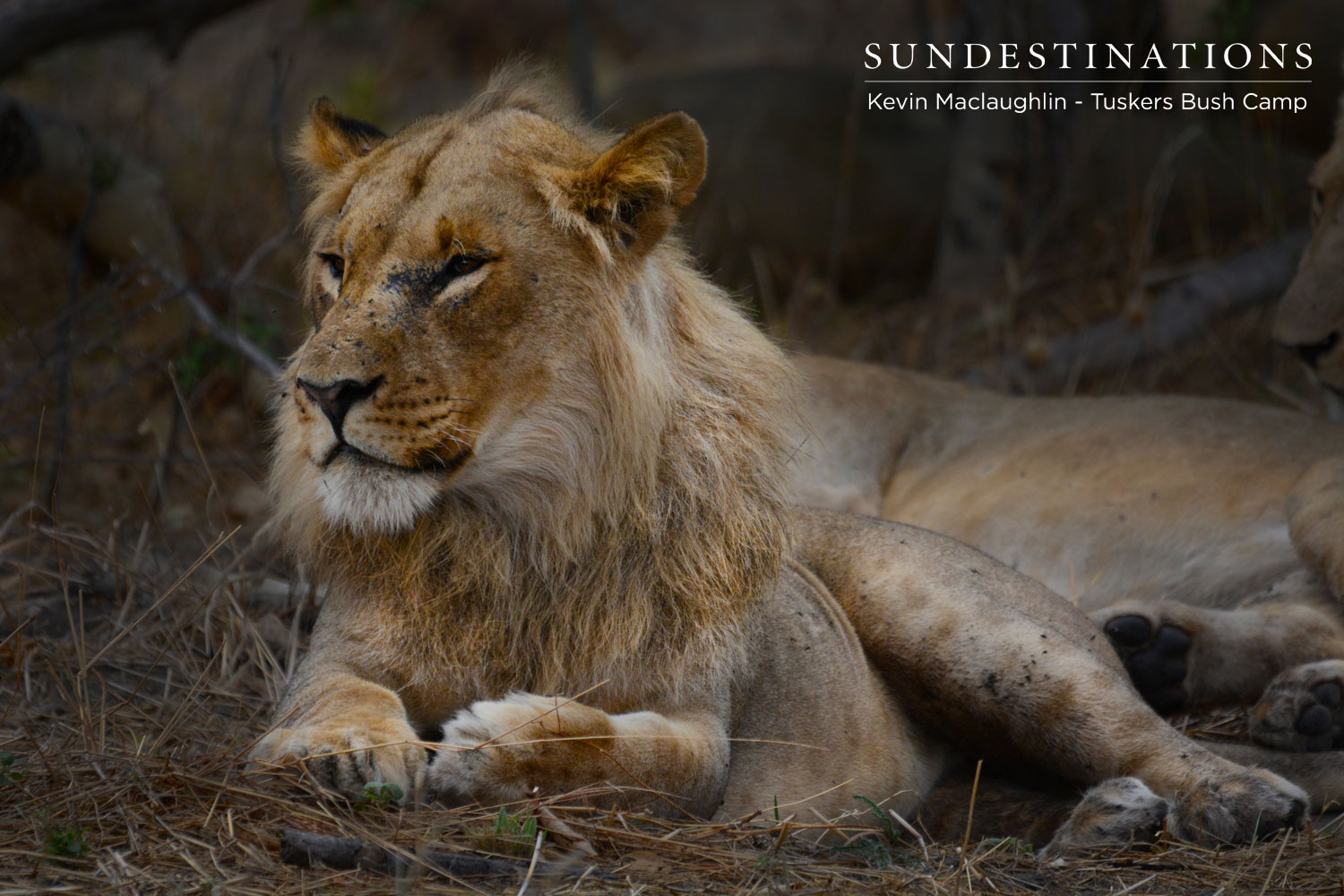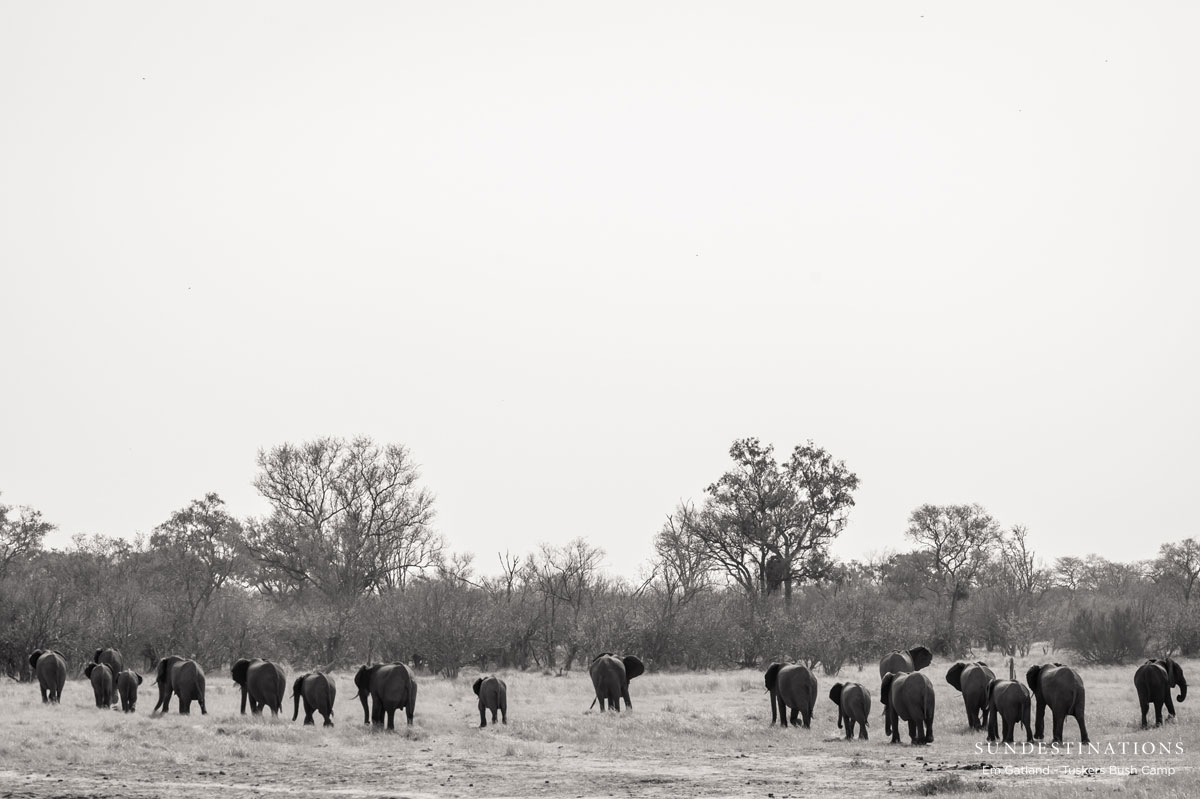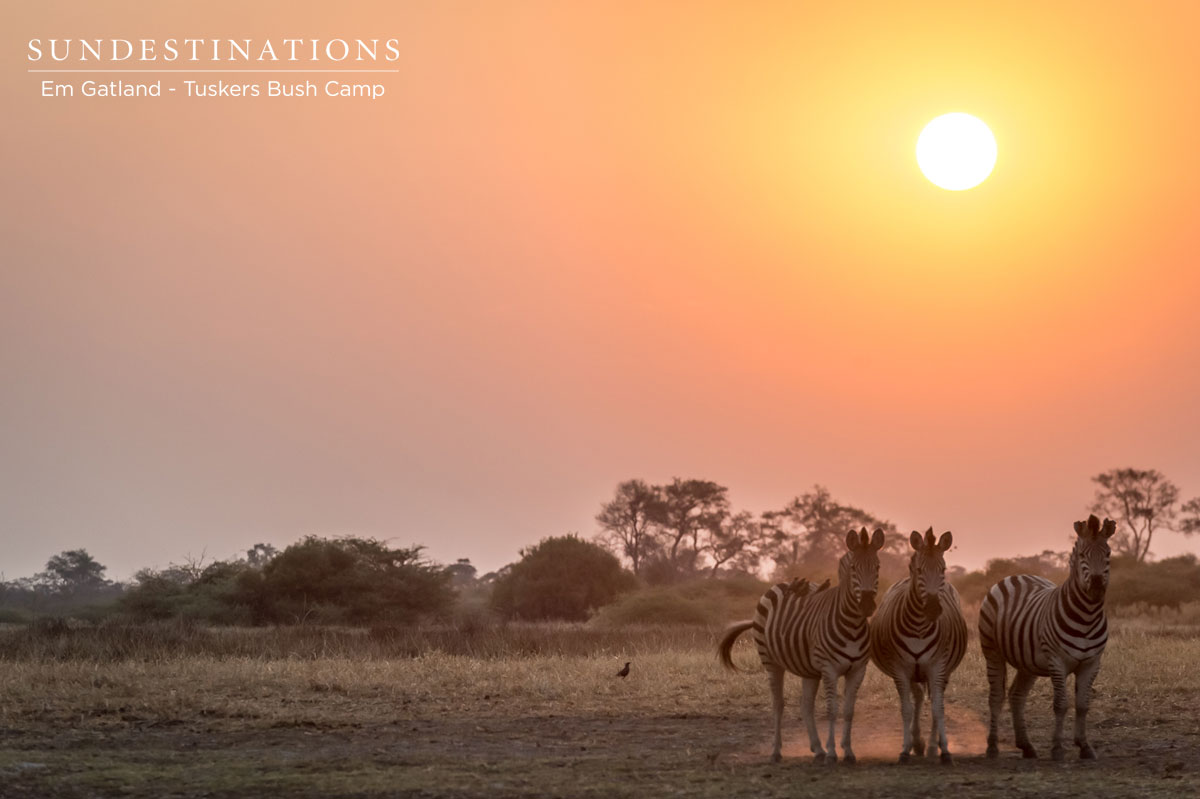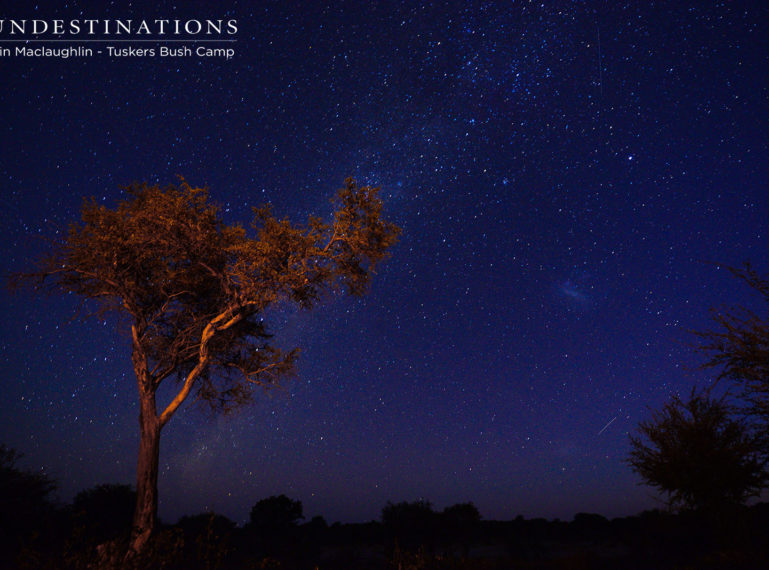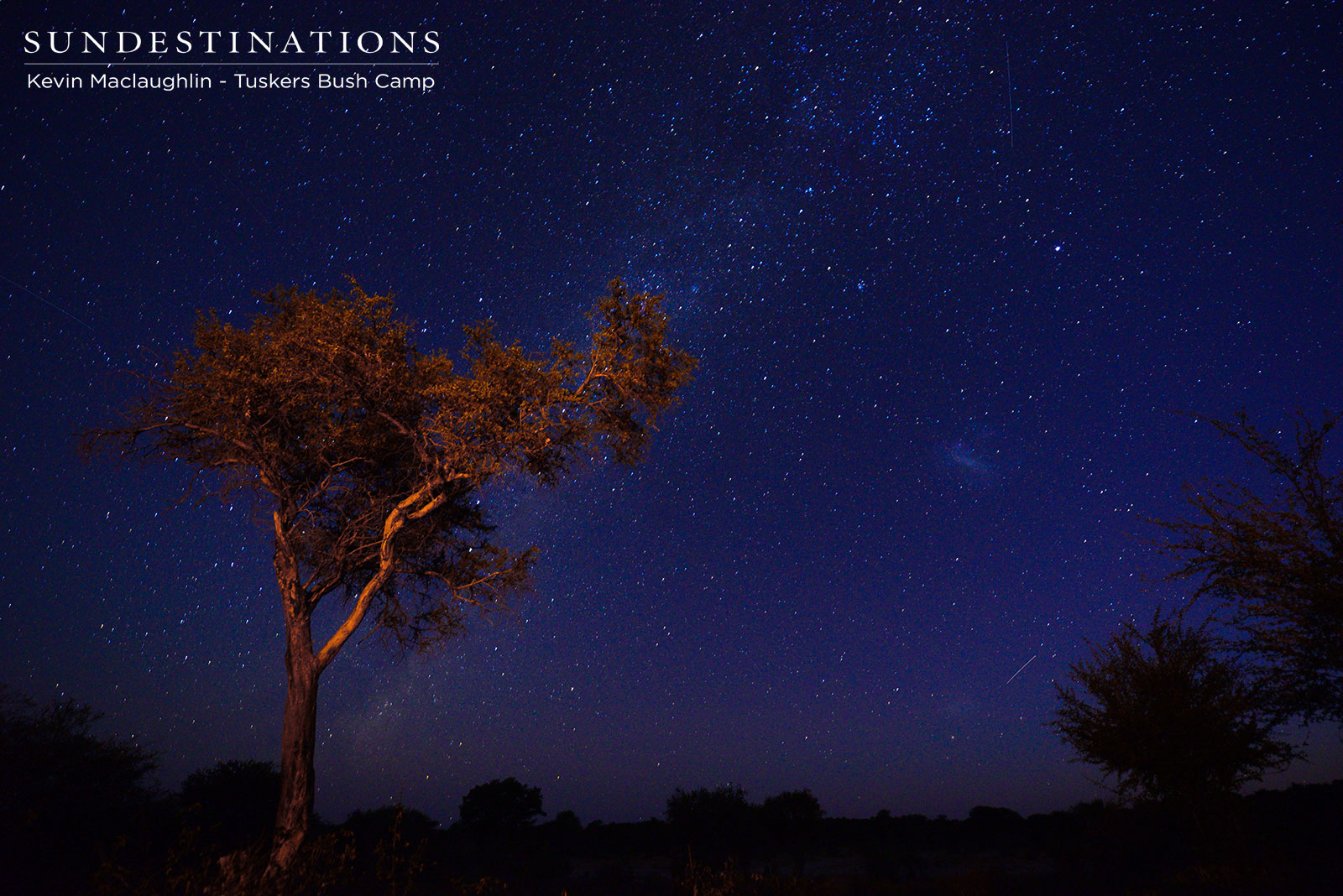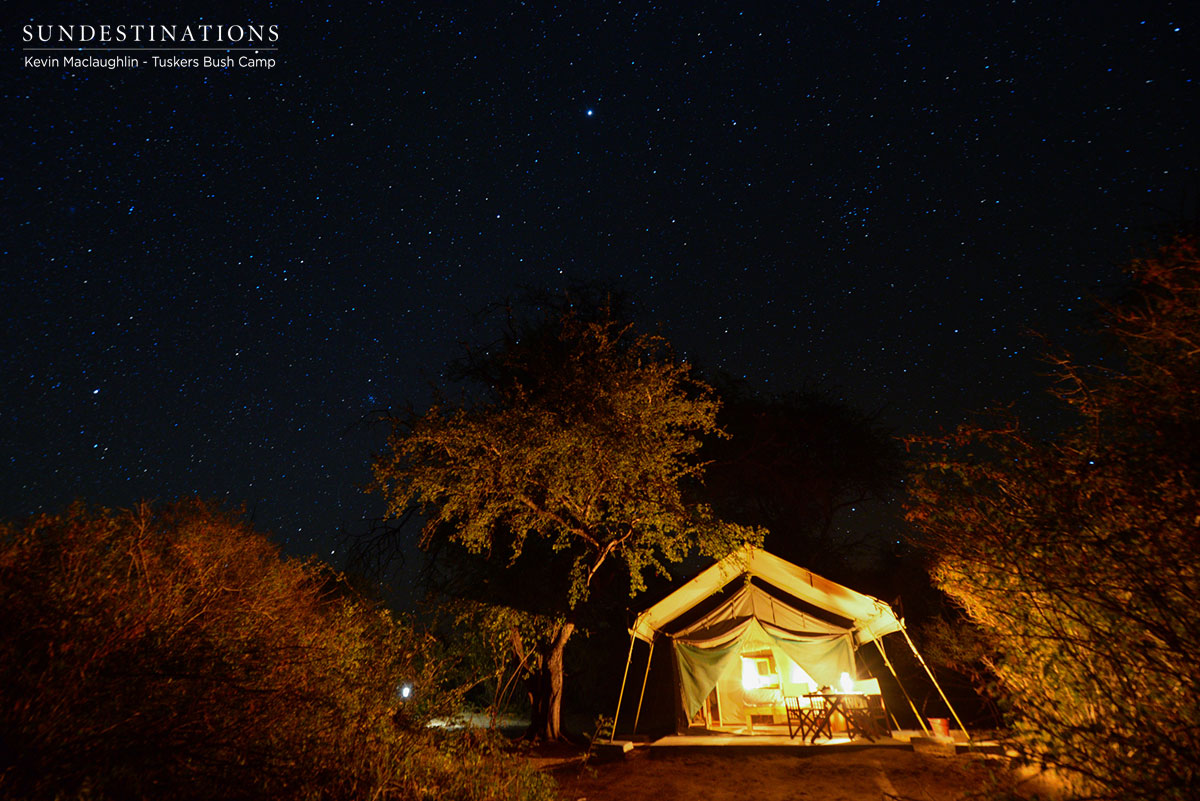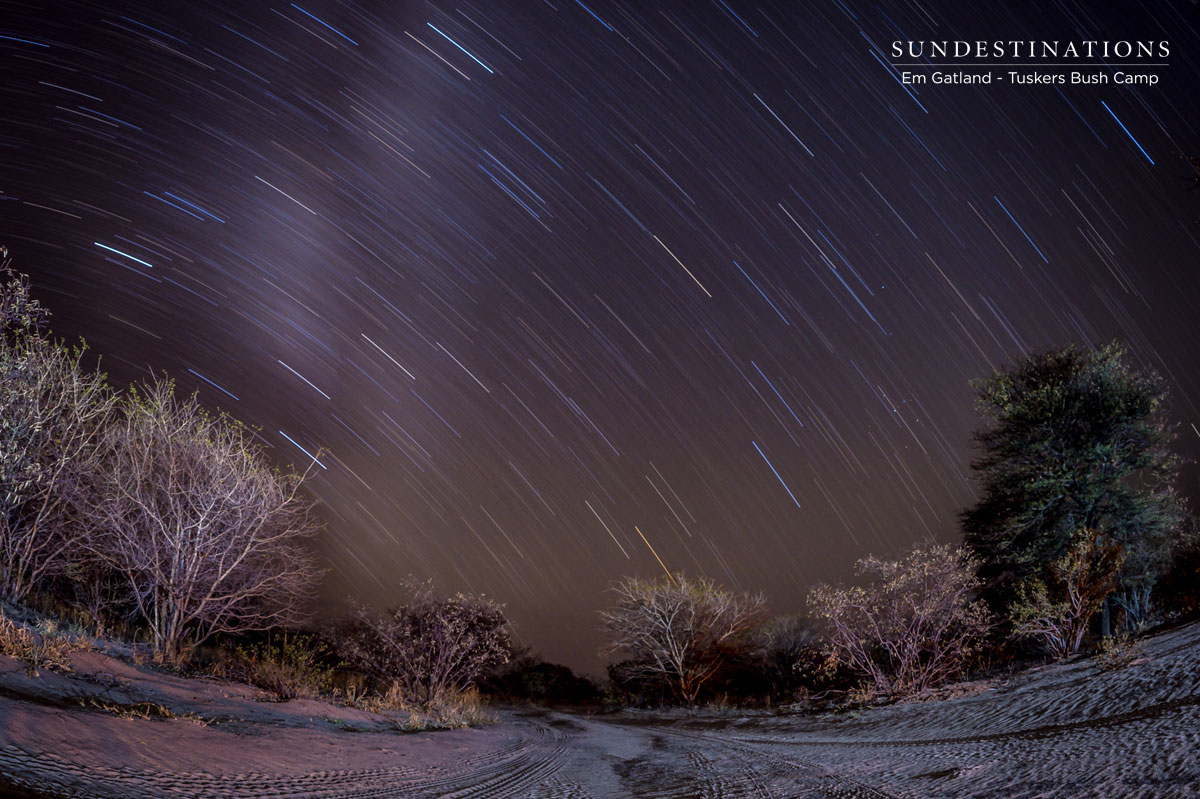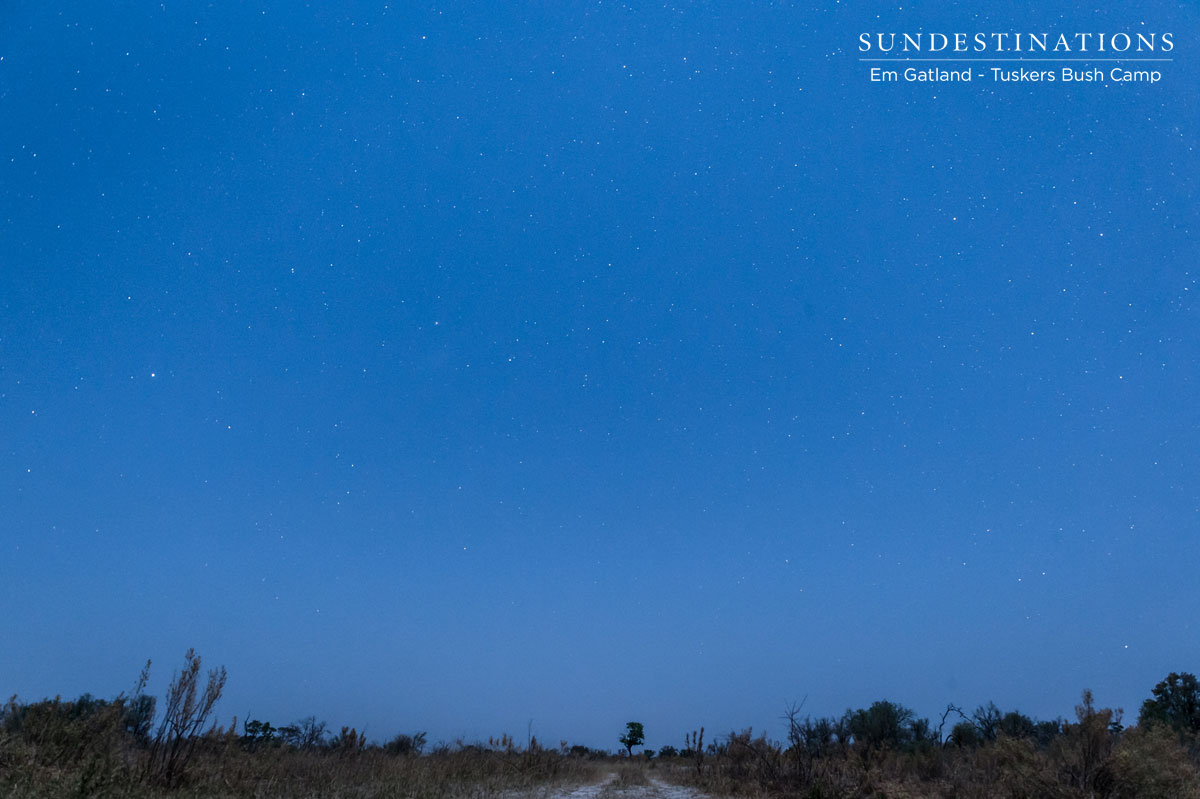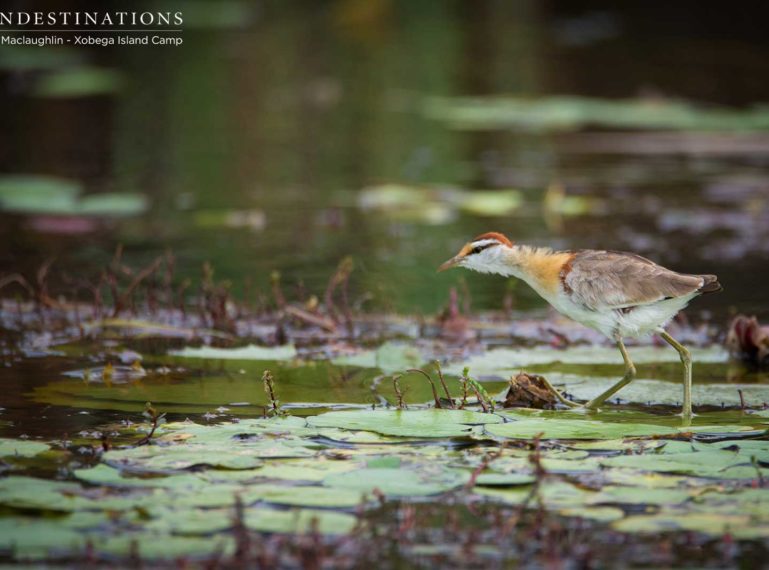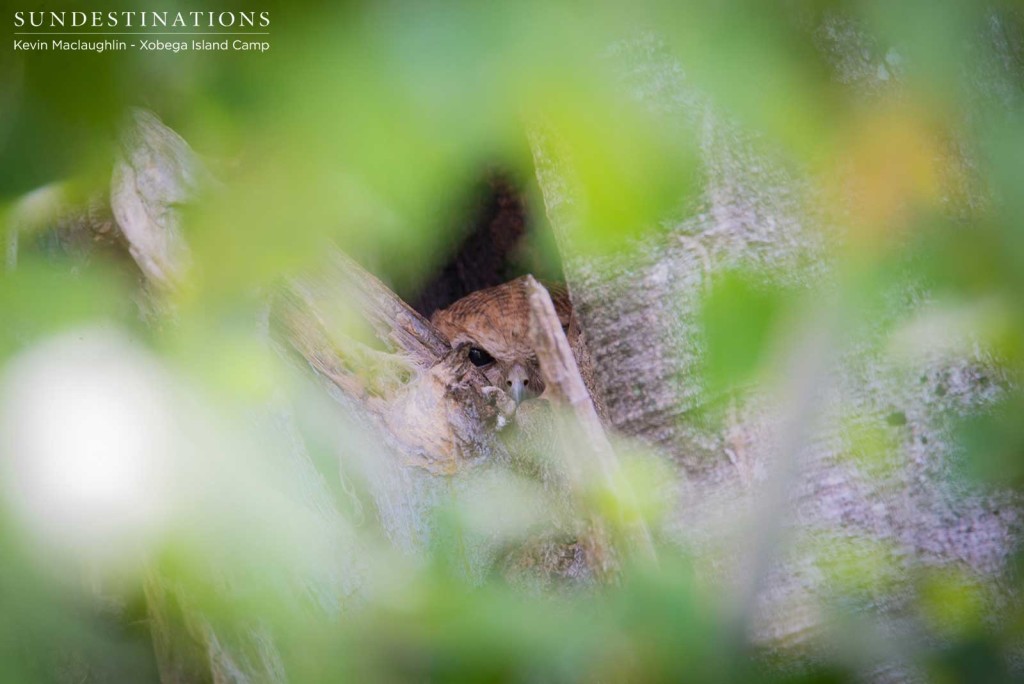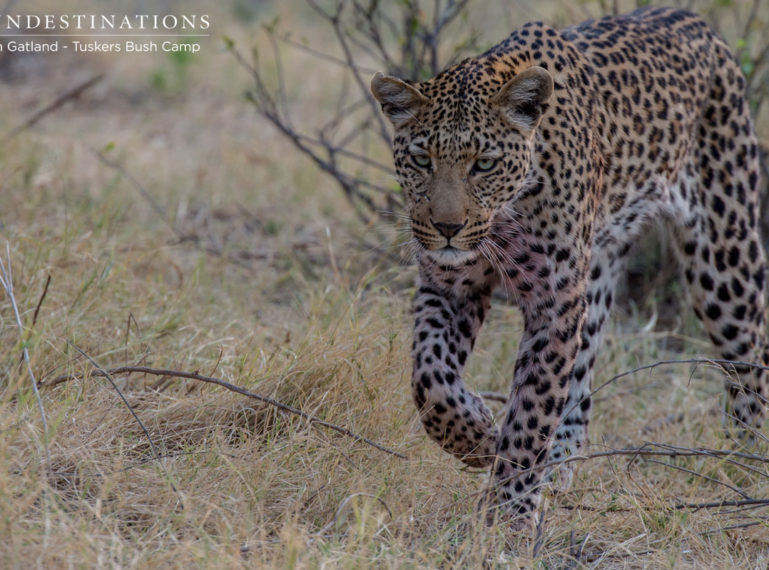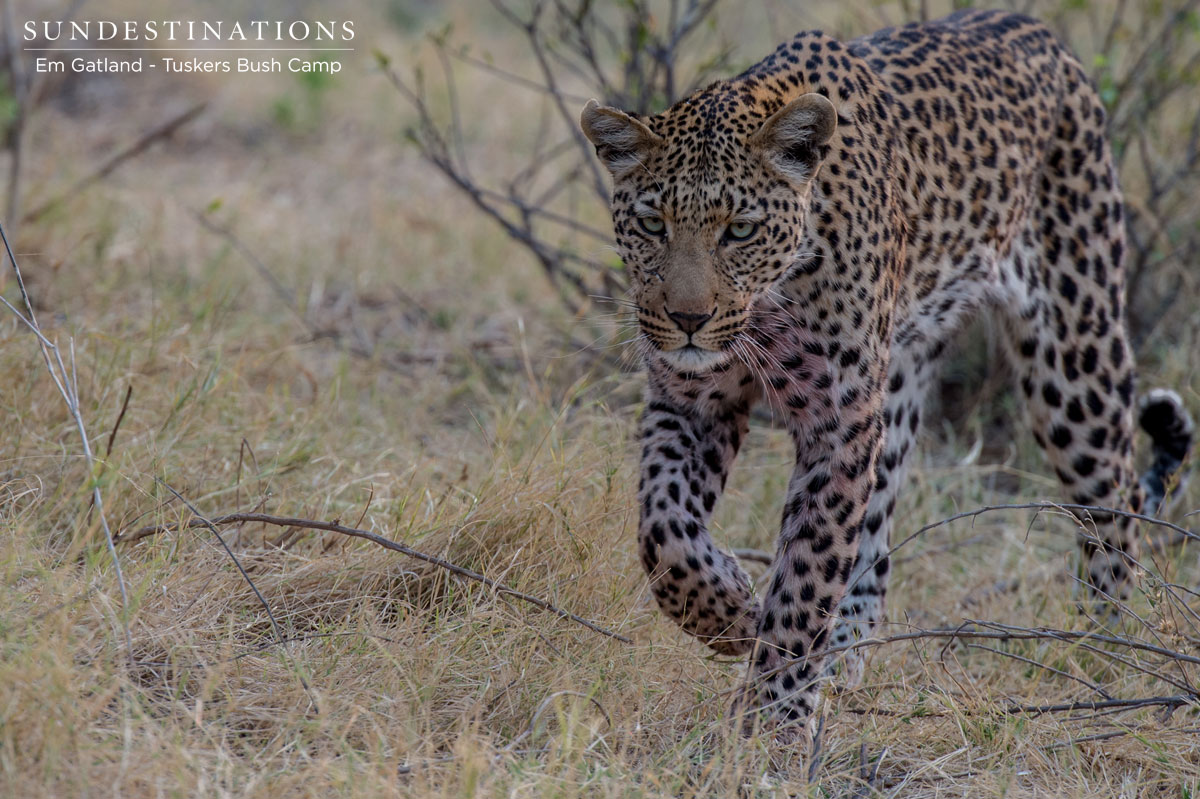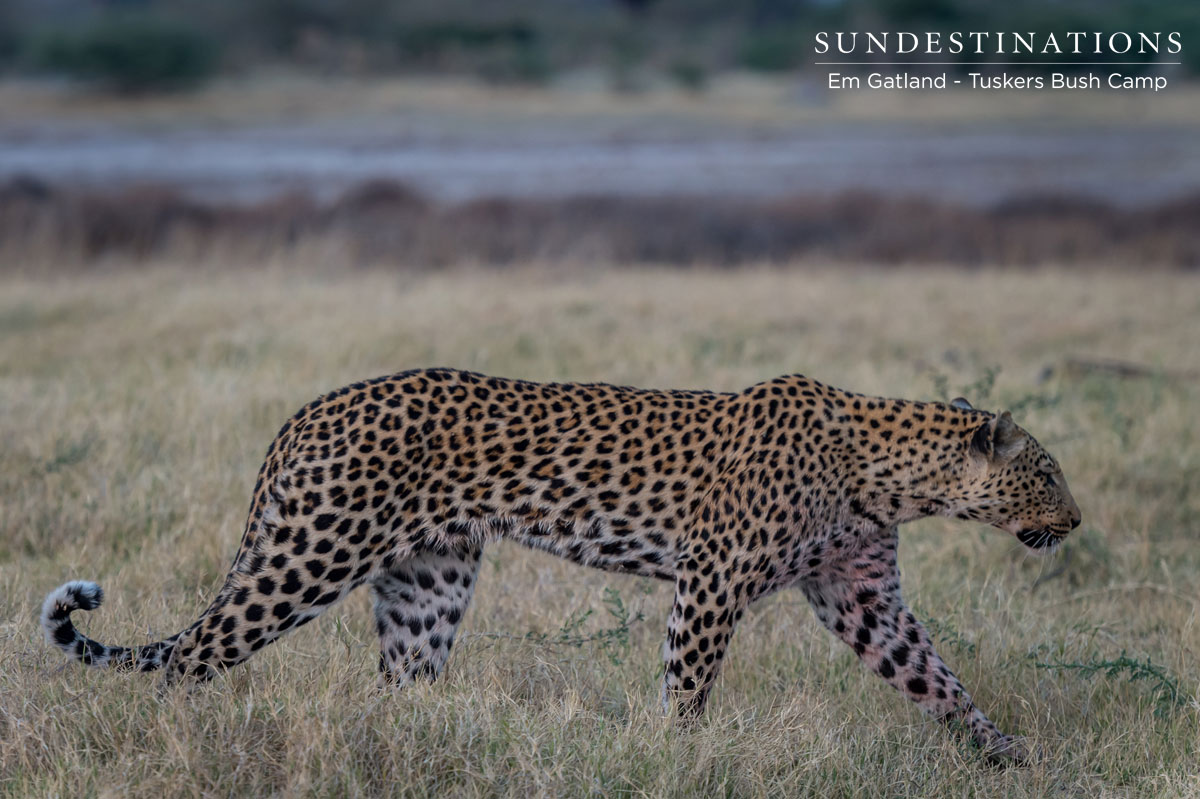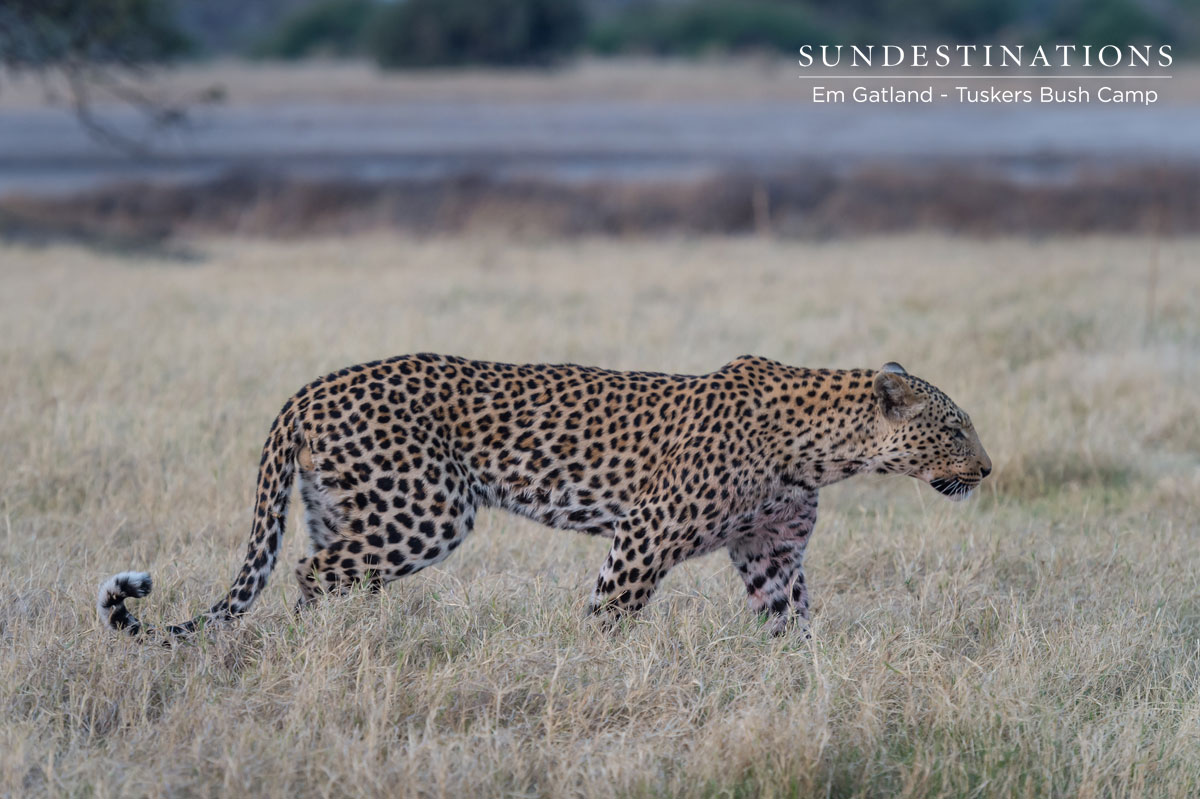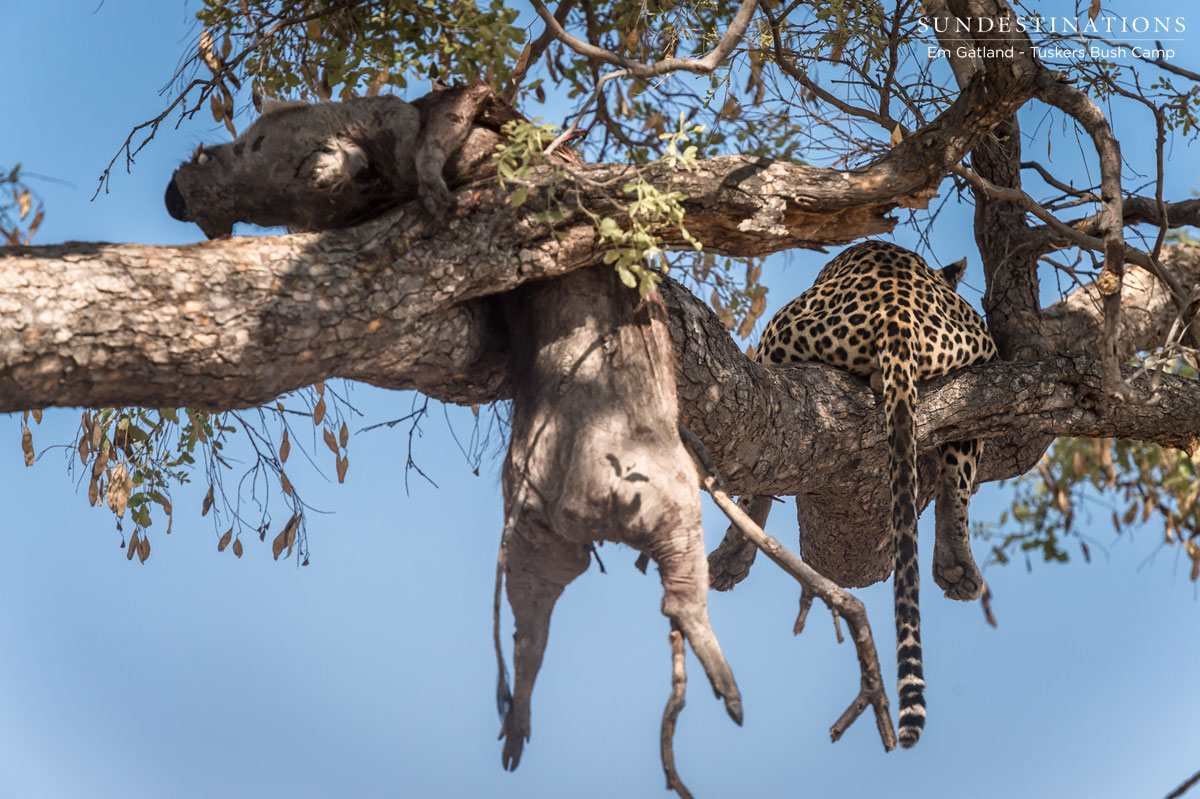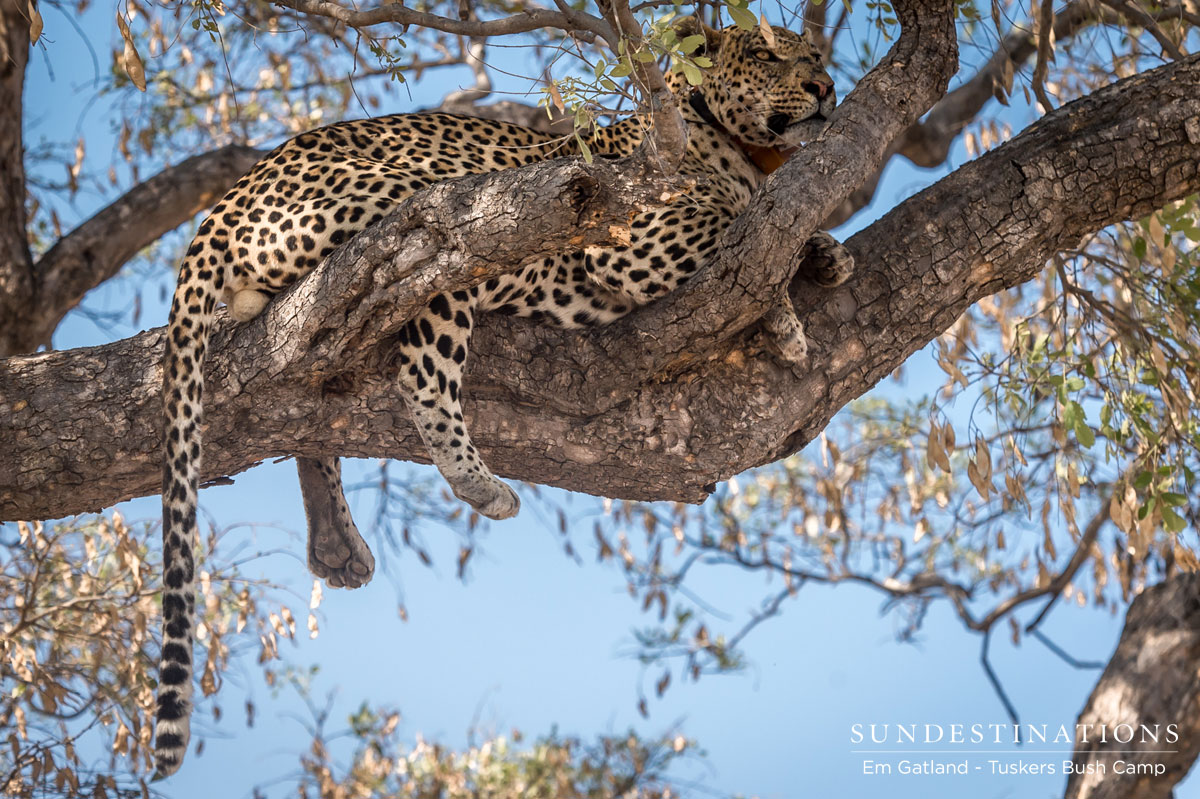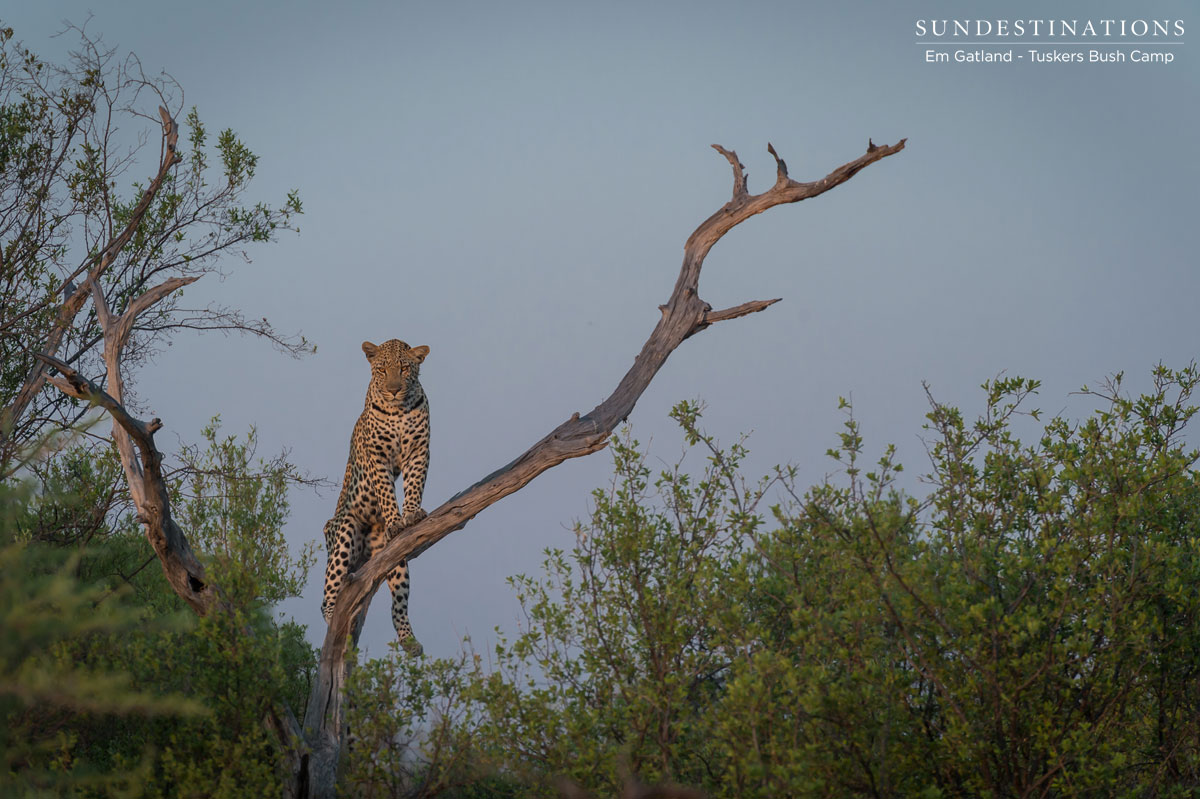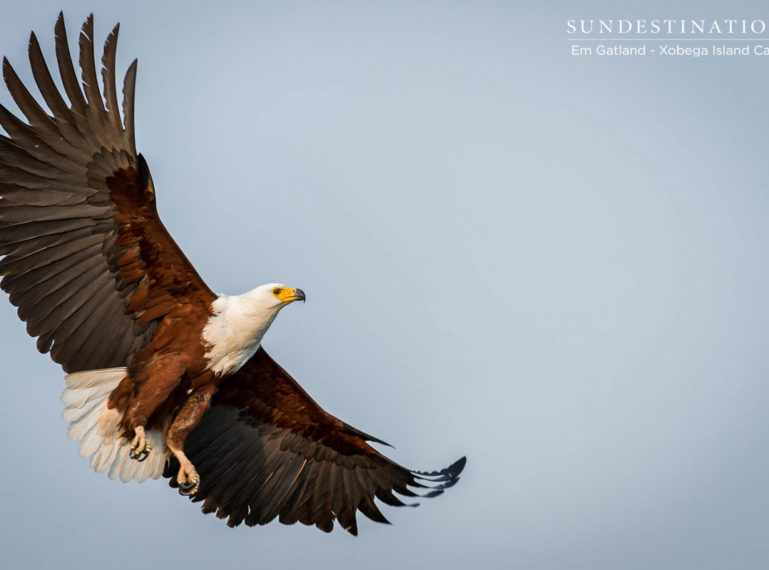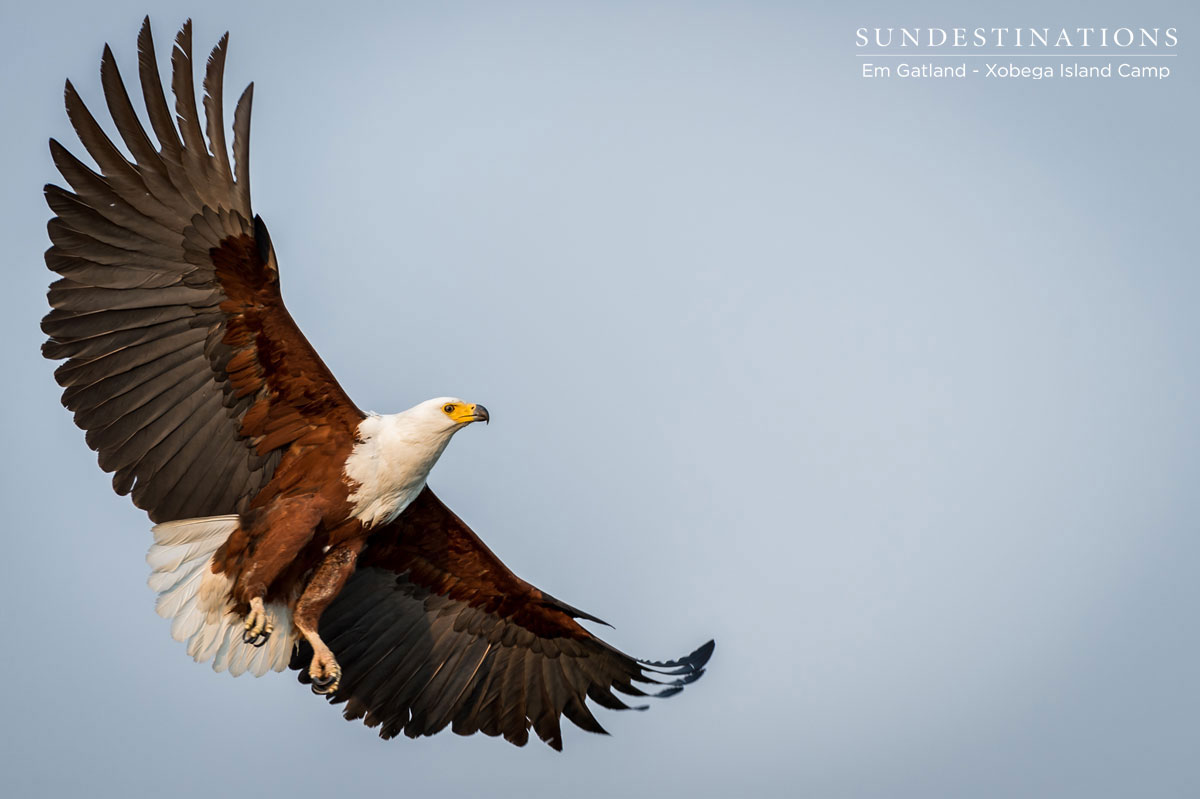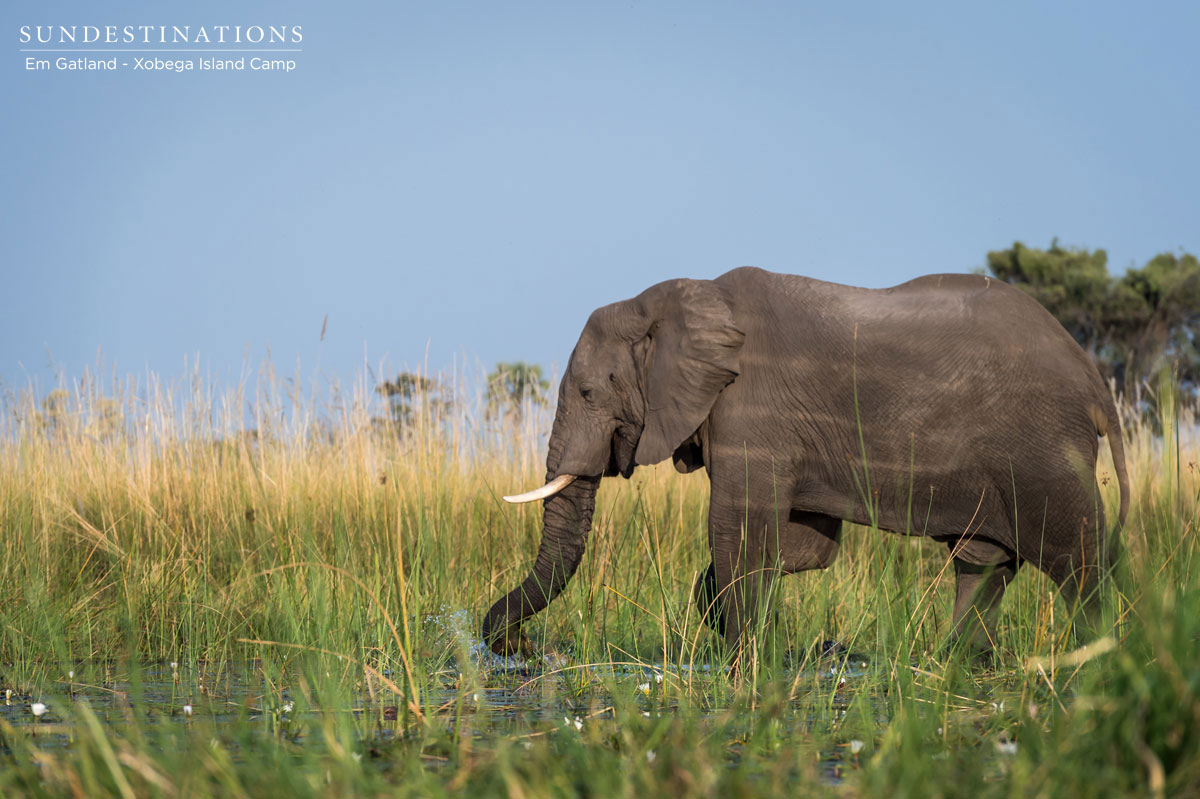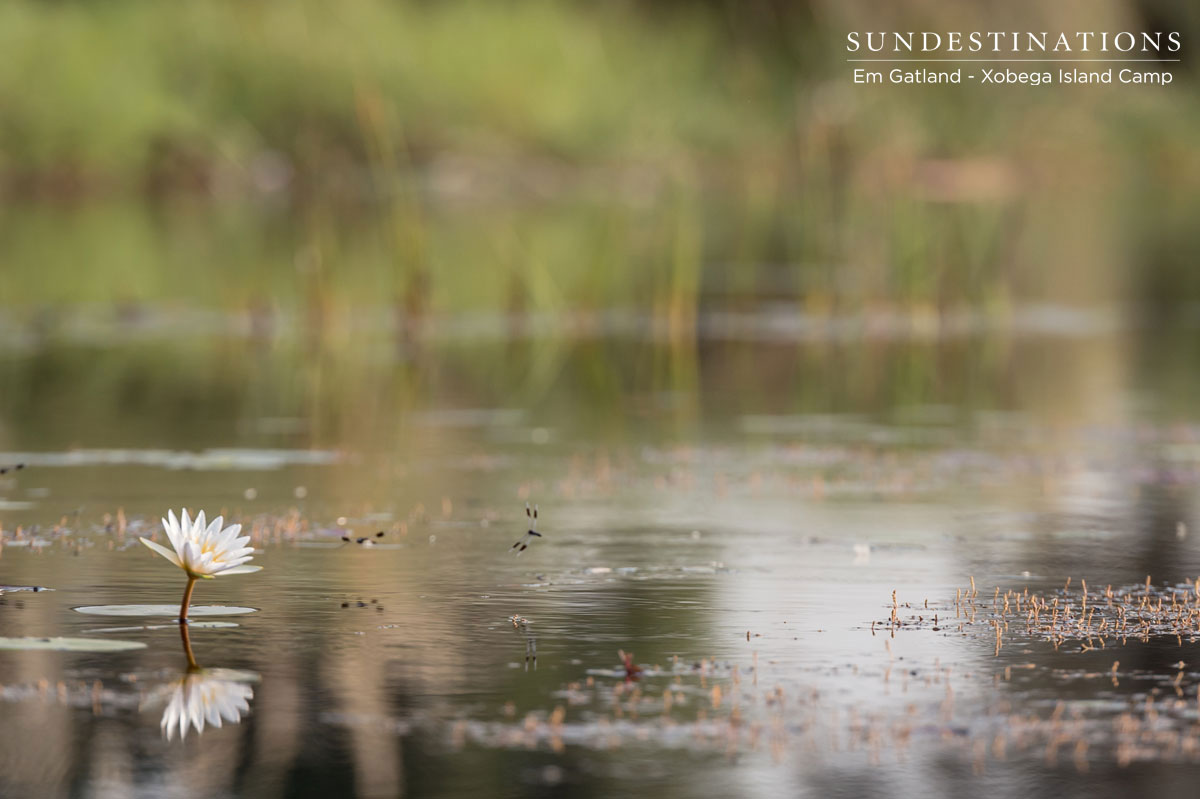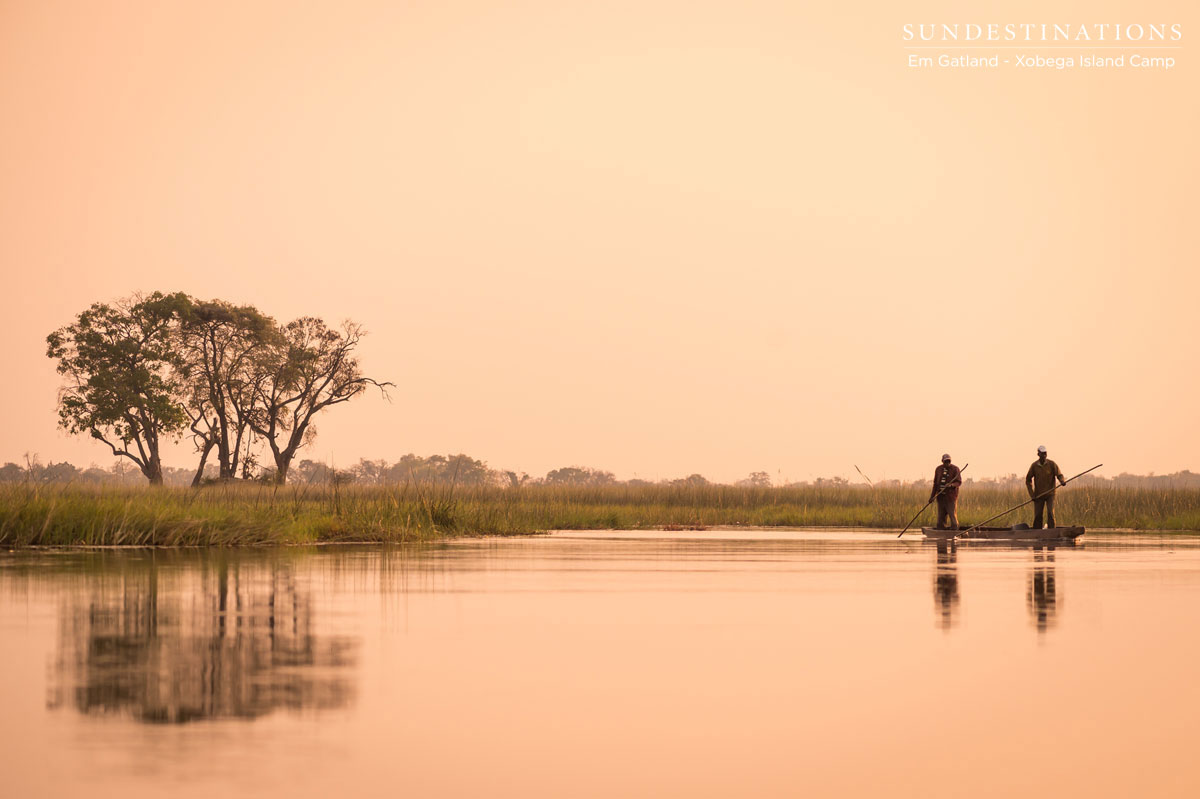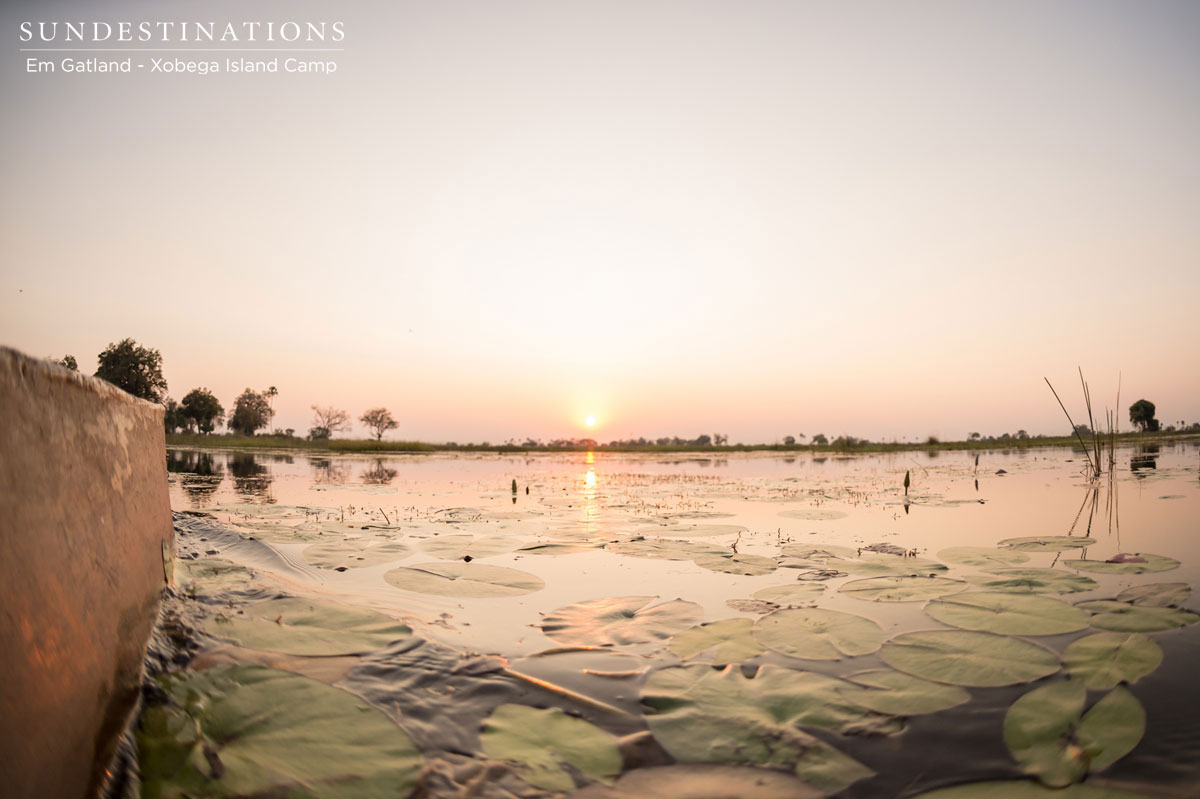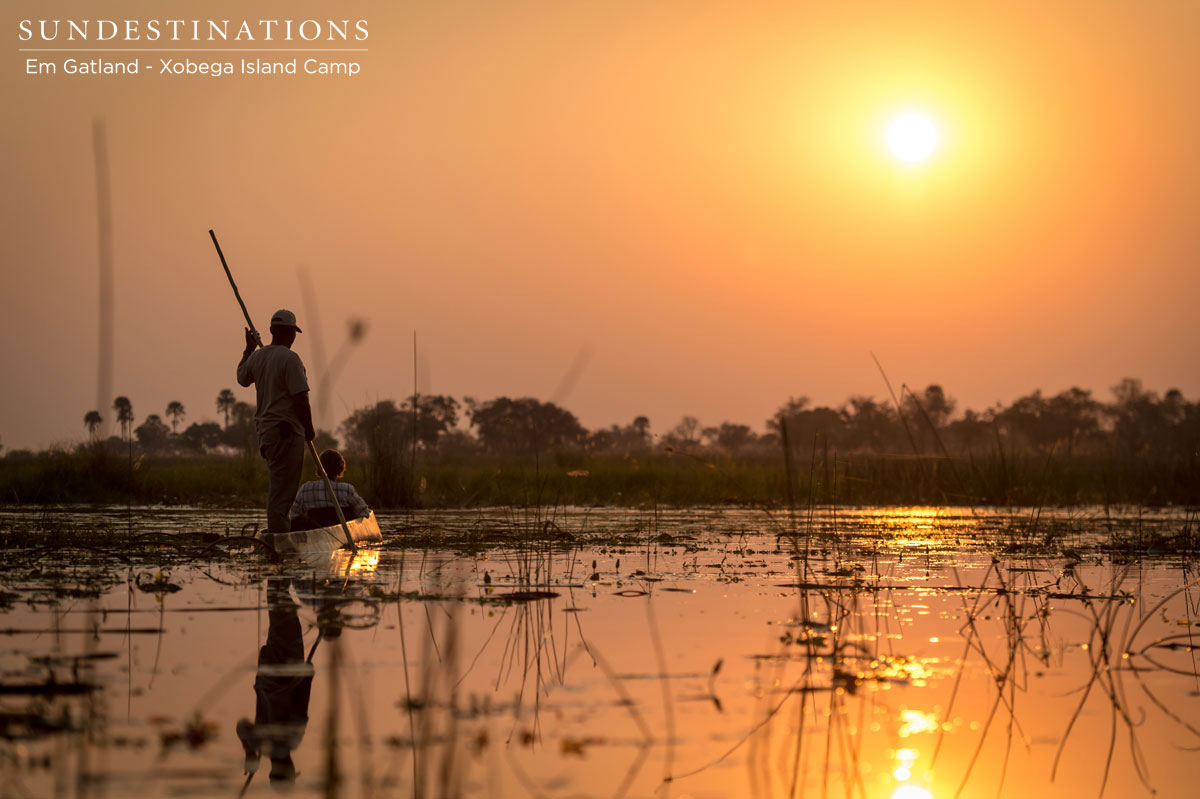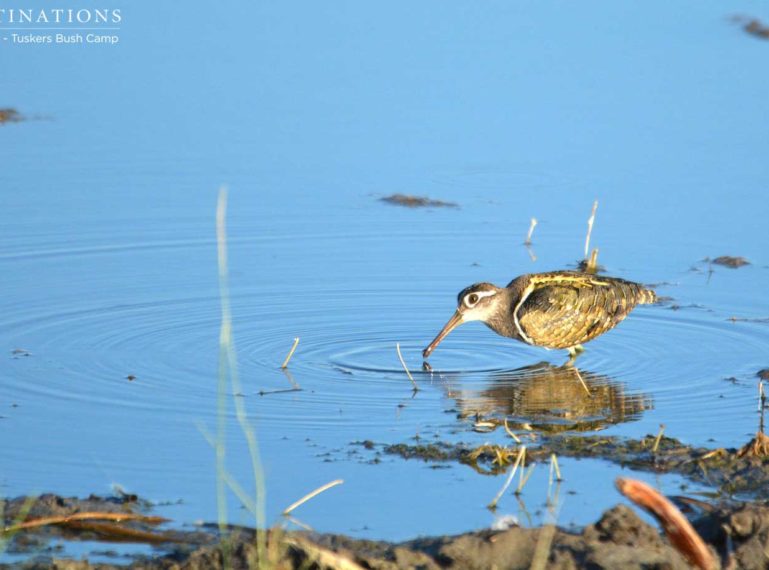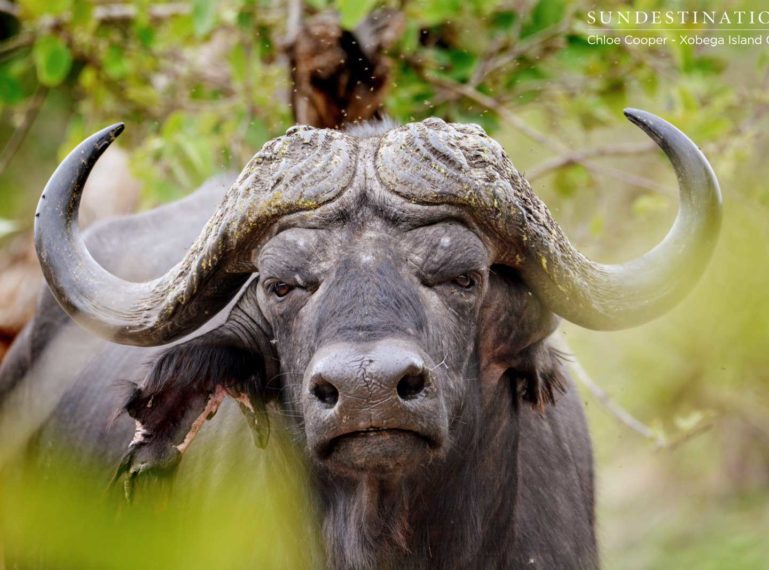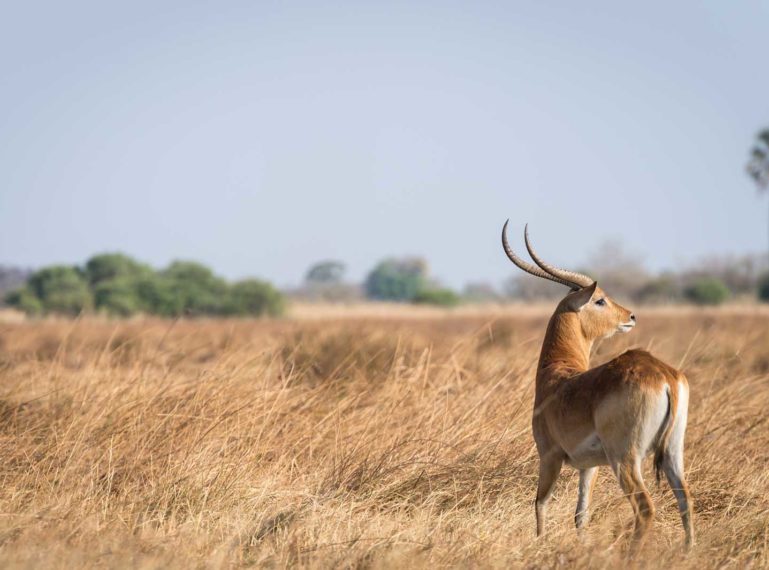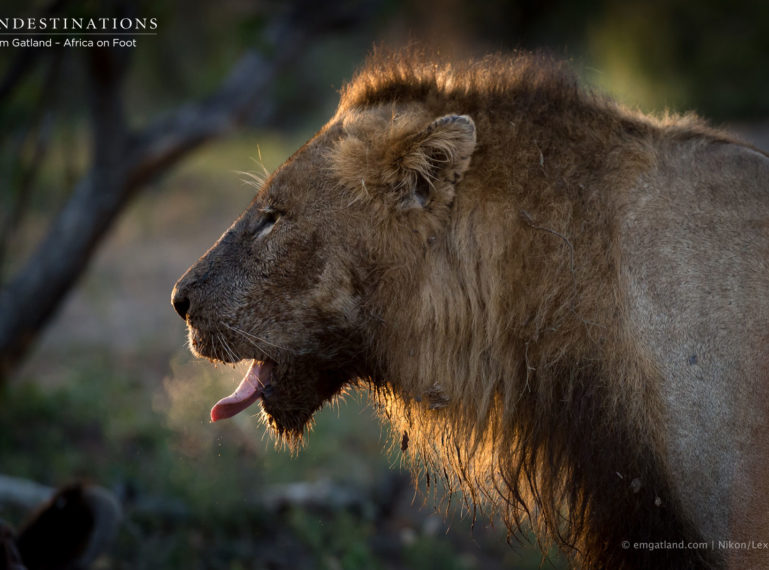
Klaserie Lion Catch-up: NEW Male Lion in Klaserie
As the seasons have shifted, so have our lion pride dynamics. Being based in an area sharing unfenced borders with the Timbavati Game Reserve and the Kruger National Park means plenty of scope for nomadic lions and lion prides to move around. Prides split, new males patrol territories, old males mate with rogue lionesses and cubs grow-up. This is par for the course when it comes to lion prides in the Klaserie Private Nature Reserve. We observe, we speculate and then we huddle together to confirm what’s happening in the ever-shifting world of lions. With that being said, we have an exciting new development in the lion world.
Sightings over the past year have been largely dominated by the Trilogy boys, the Ross Pride Breakaway lionesses, the occasional Hercules Pride sighting and of course, the white lioness sightings. But, there’s a new kid on the block. A lone ranger of sorts who has been spotted traversing Africa on Foot and nThambo Tree Camp turf. Meet the Mabande male, a scraggly looking, slightly nervous, nomadic male lion who appears to be staking his claim on Klaserie turf. Or so we think. We could be wrong, or we could be right! Here’s what we do know.
The boys from the Ross Pride of lions chased the Mabande male off his traverse and he fled to our neck of the (Acacia) woods. Previously part of a coalition of 4, the Mabande male ended up in a coalition of two. After being flushed out by the Ross Boys, the two fled. We’ve only seen Mabande male around our camps – sightings of the second male have not been recorded.
There seems to be a shift in power and a bit of chaos with our Klaserie lions. Here are our recorded sightings and happenings over the past couple of weeks, courtesy of ranger Michael Beard.
- Mabande male seen on Klaserie traverse close to camps. Identification confirmed by rangers.
- He was seen close to the dam where the huge breeding herd of elephants were seen playing – this was the second sighting.
- Mabande male was then spotted around Africa on Foot camp and tried to take down a zebra. The rather alarmed potential meal escaped, leaving him somewhat hungry.
- The next day rangers spotted the Mabande male again, just patrolling the region. Albeit nervously.
- Our new rogue male lion wasn’t seen for a few days – probably lying low! He then re-appeared with a vengeance and successfully took down a buffalo.
- A couple of days later the Ross Pride Breakaway females caught wind of the new boy and his kill. They approached the area where he was feasting but the Mabande male chased them away!
- The Ross Pride Breakaway females decided to conduct their own kill and killed a buffalo rather close to nThambo Tree Camp.
- Cue the following day after the Ross feast. Surprise surprise, the Hercules pride made a comeback and chased the Ross Pride Breakaway girls away from the remnants of their buffalo carcass. That Hercules pride – they’re either stealing kills, killing cubs or protecting their turf. A tough bunch of ominous cats.
- The Mabande male has since been heard calling back and forth during the dead of night. He was seen again, this time trying to track the whereabouts of the Ross Breakaway girls !
The Mabande male was initially nervous but is becoming more relaxed now. Will he go in hot pursuit of the Ross Pride girls? Is he going to stake his claim on old Trilogy turf? Where is the other male? Will the Mabande male return to his old hunting grounds or have the Ross boys take over for good?
At this stage, there’s plenty of speculation. What are your thoughts and future predictions about the Mabande male and the Ross Pride Breakaway lionesses?
